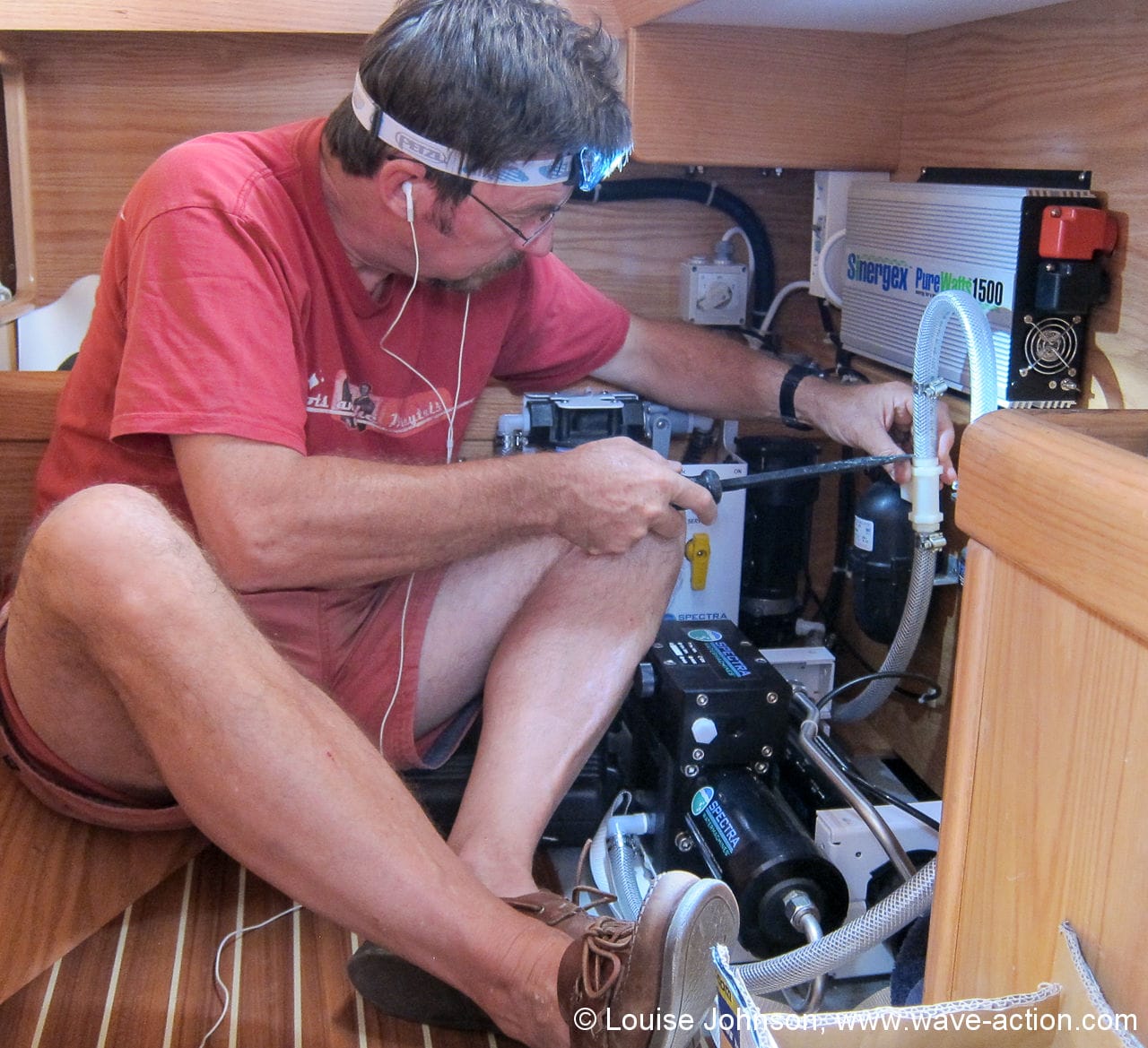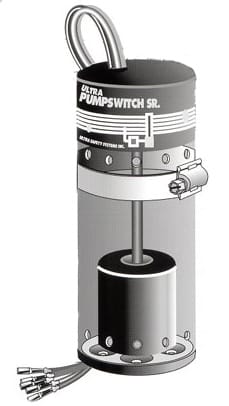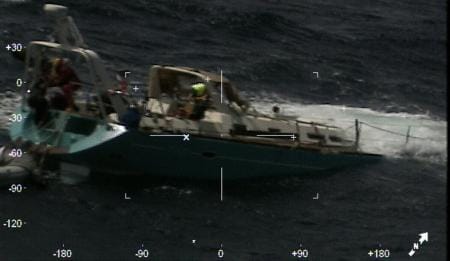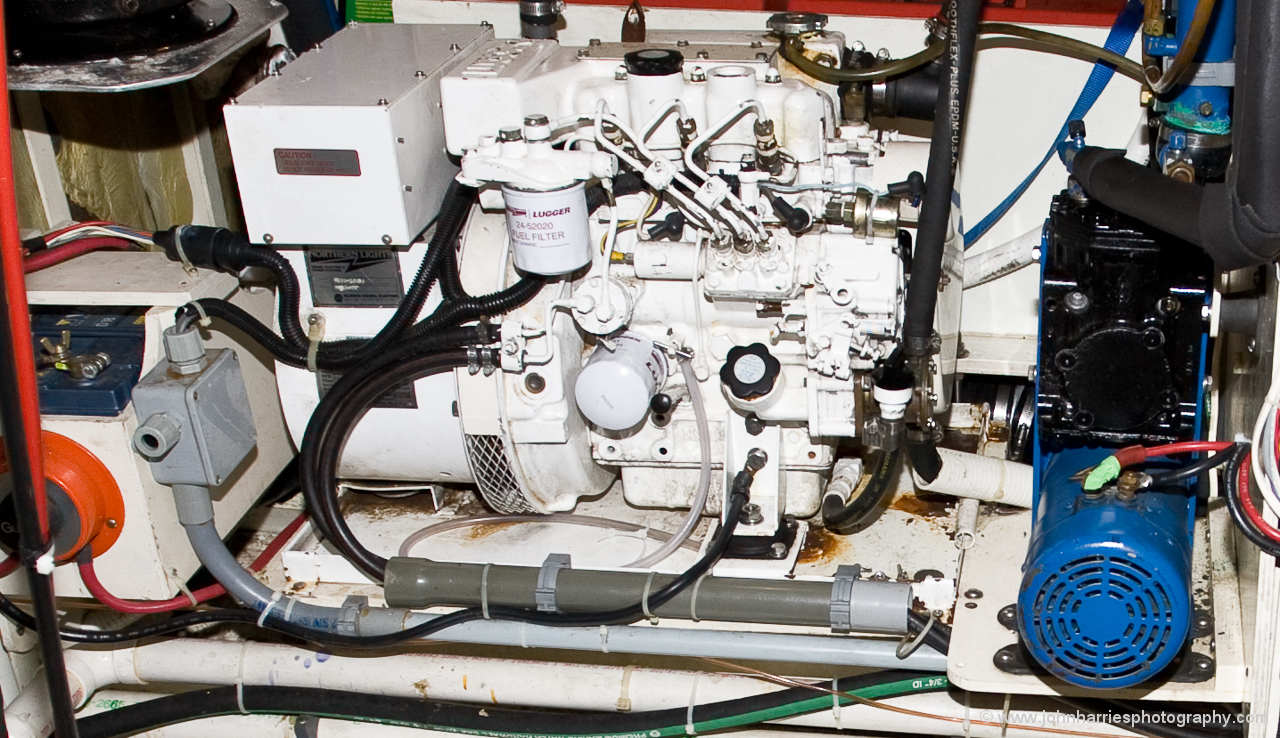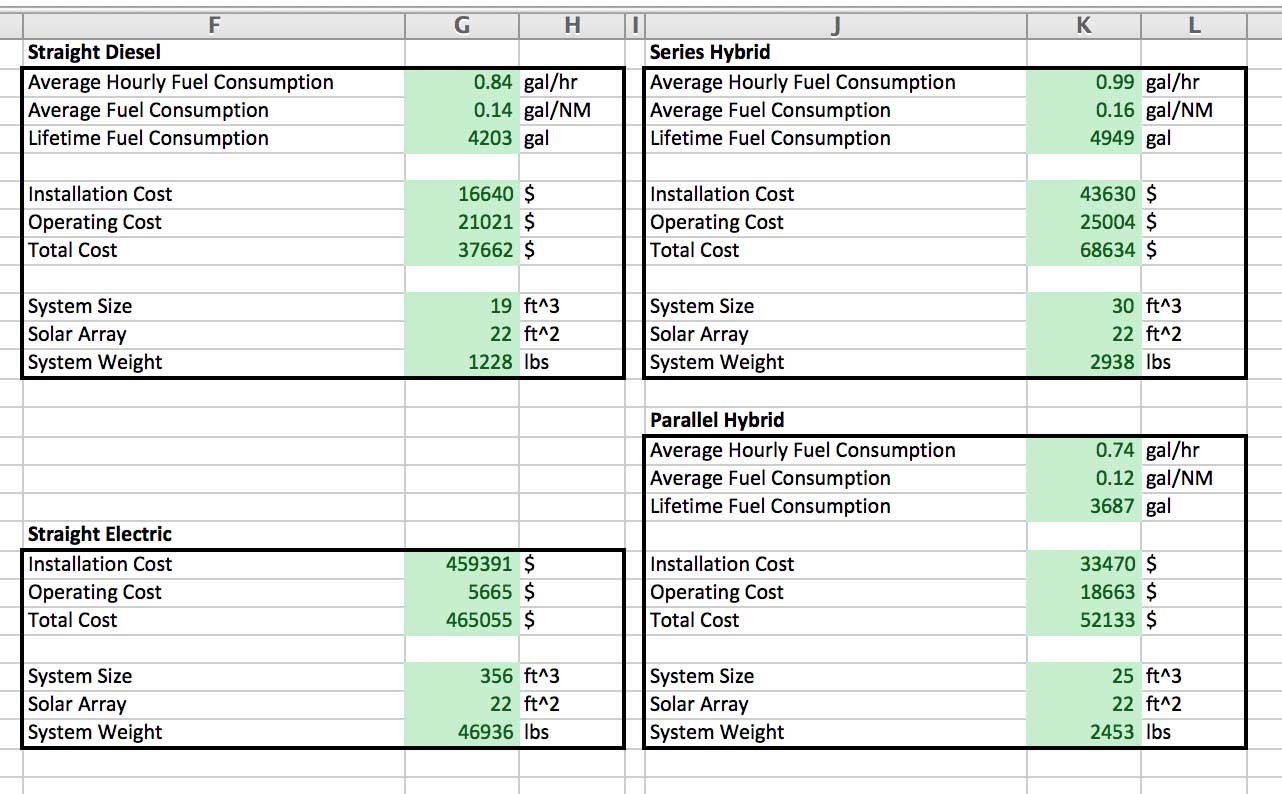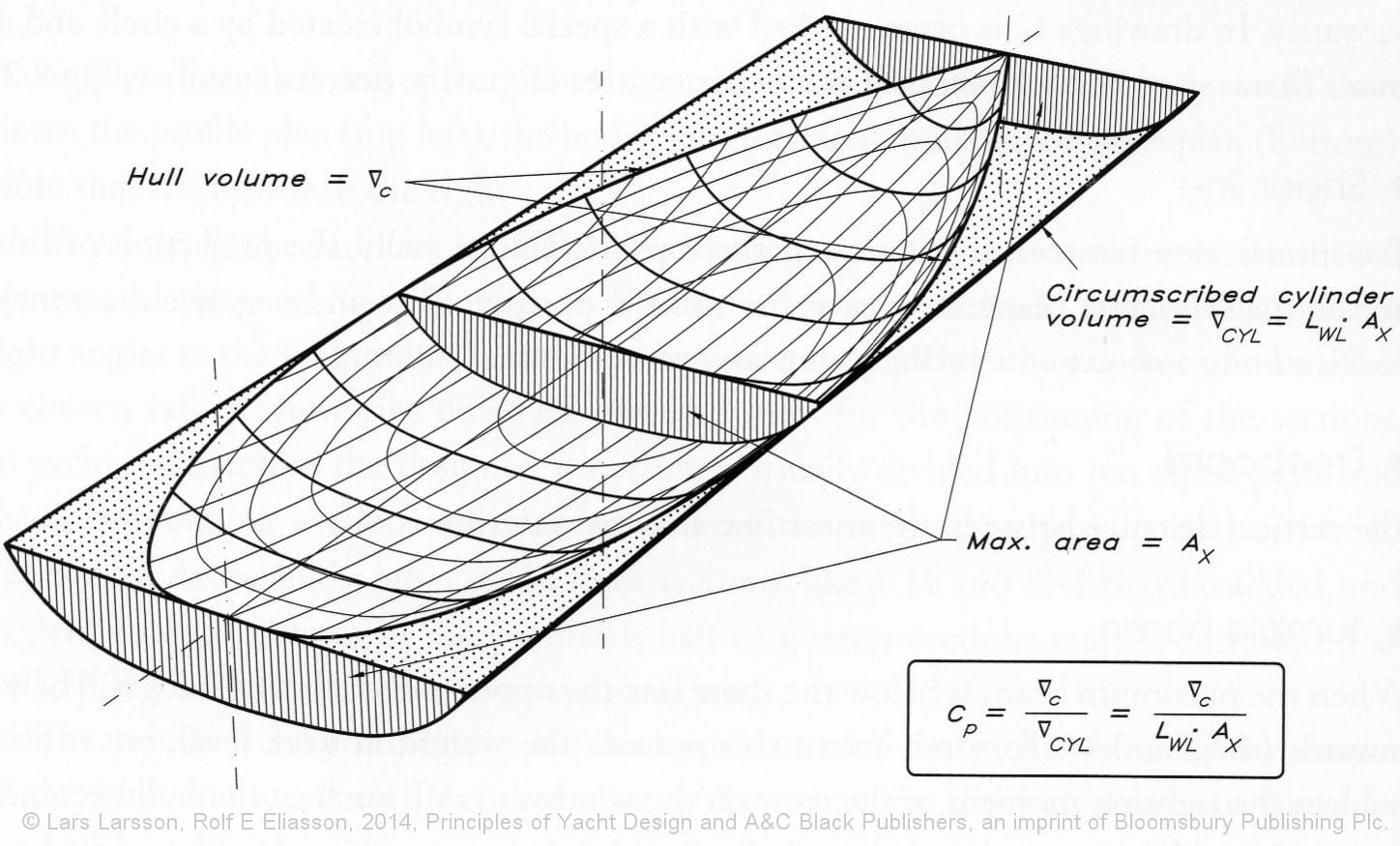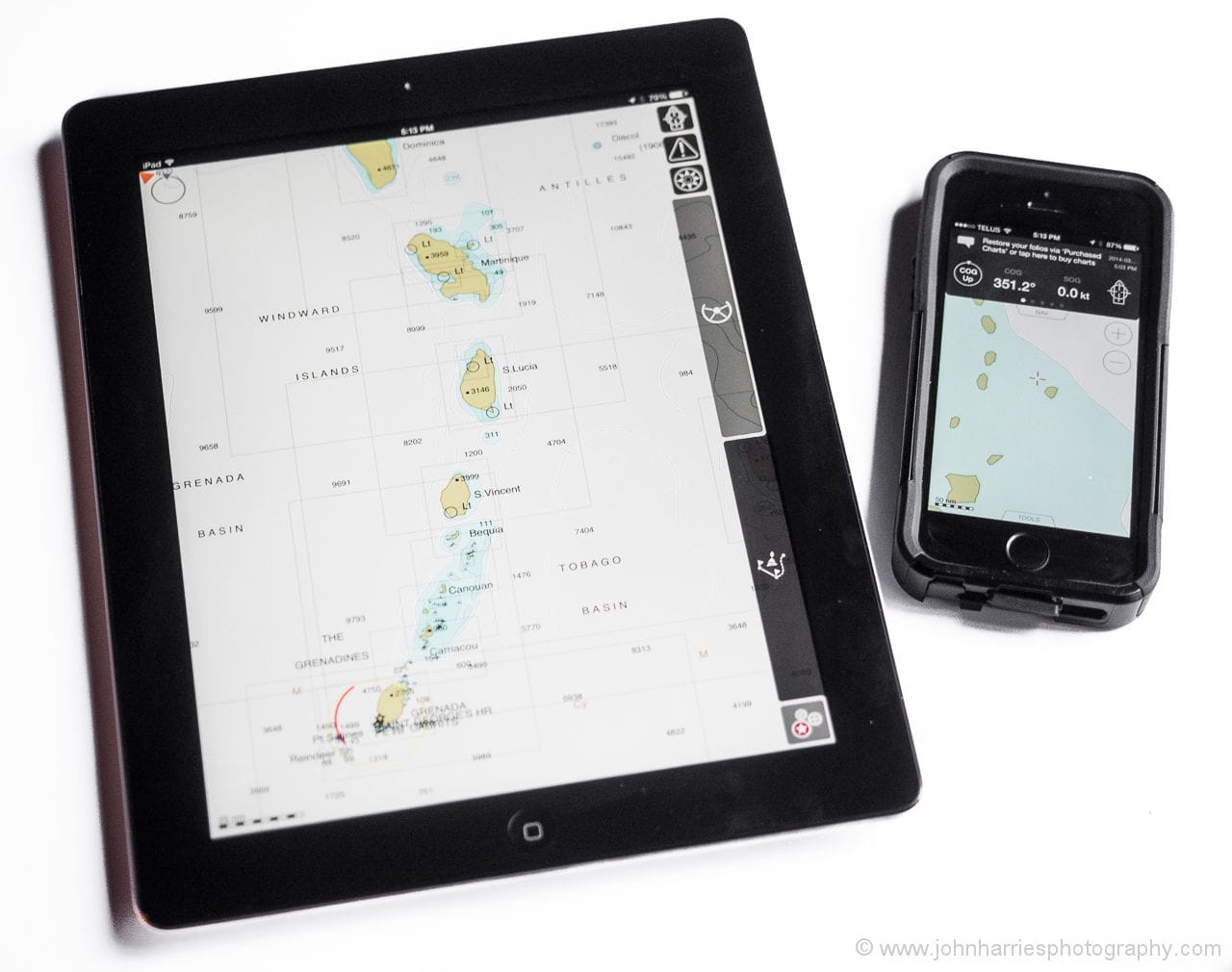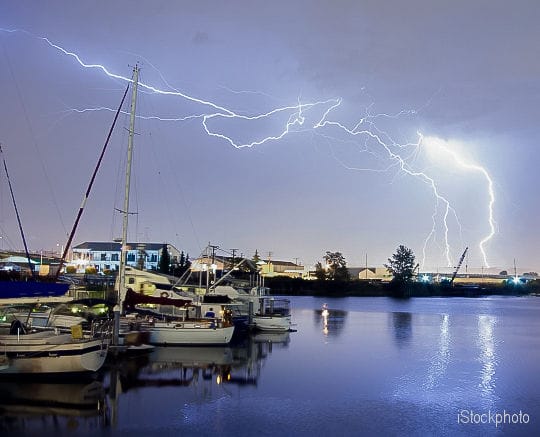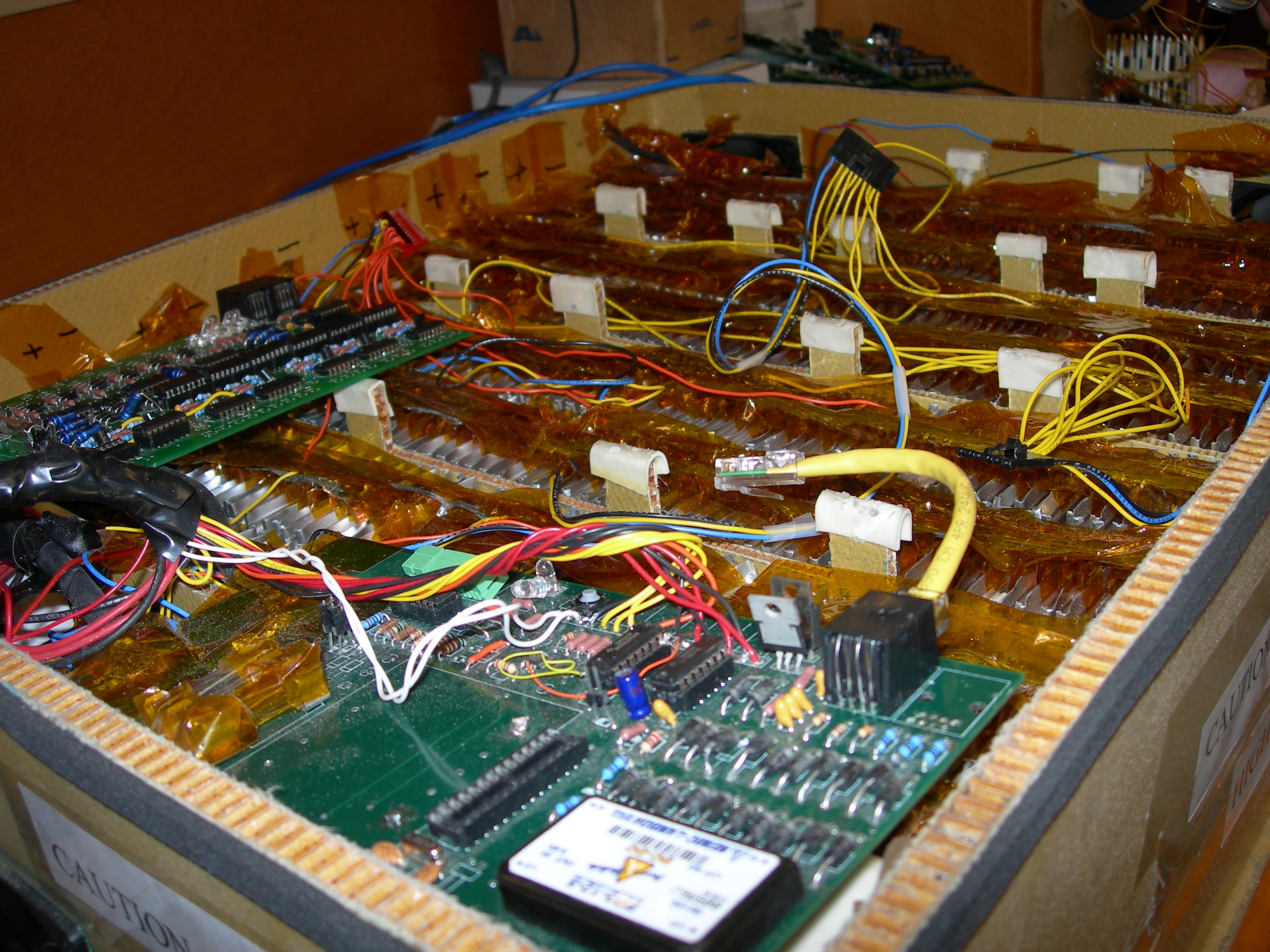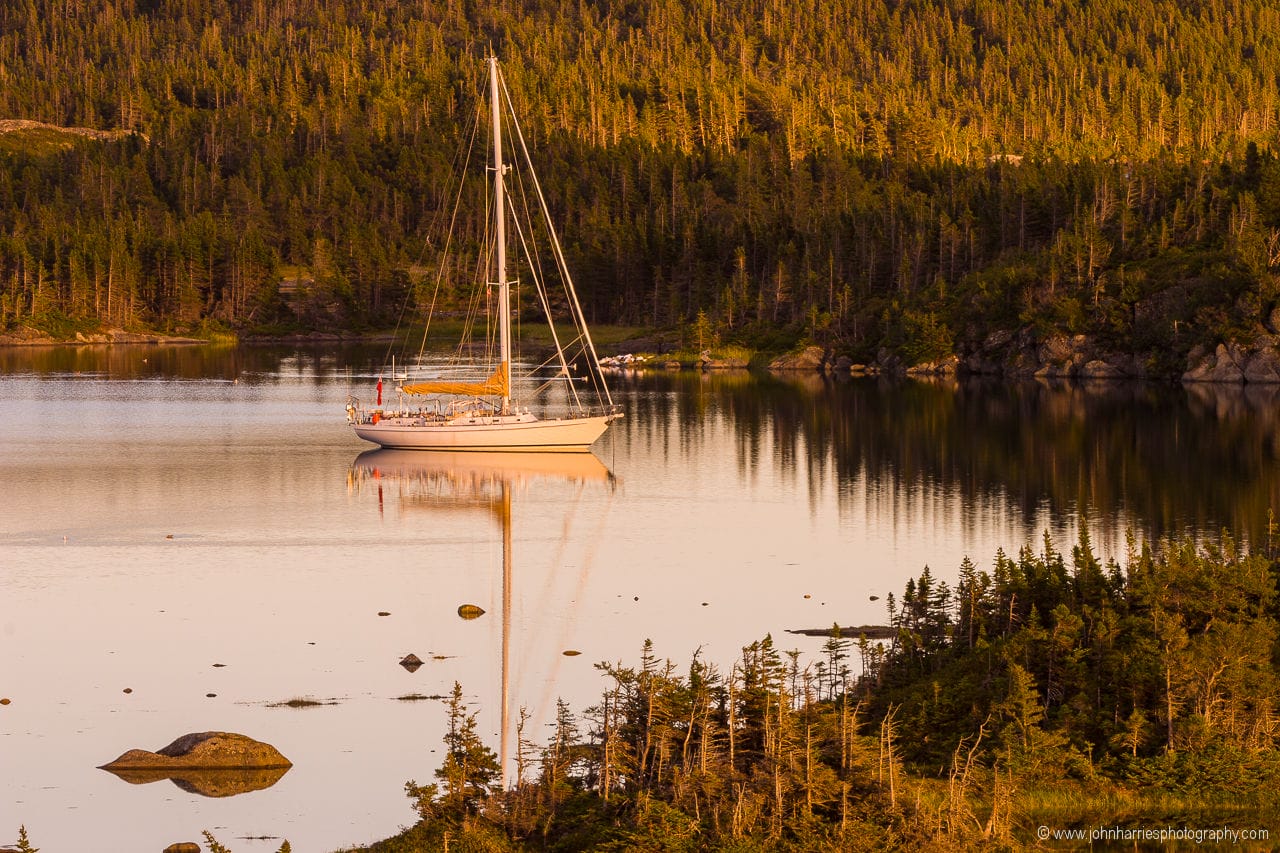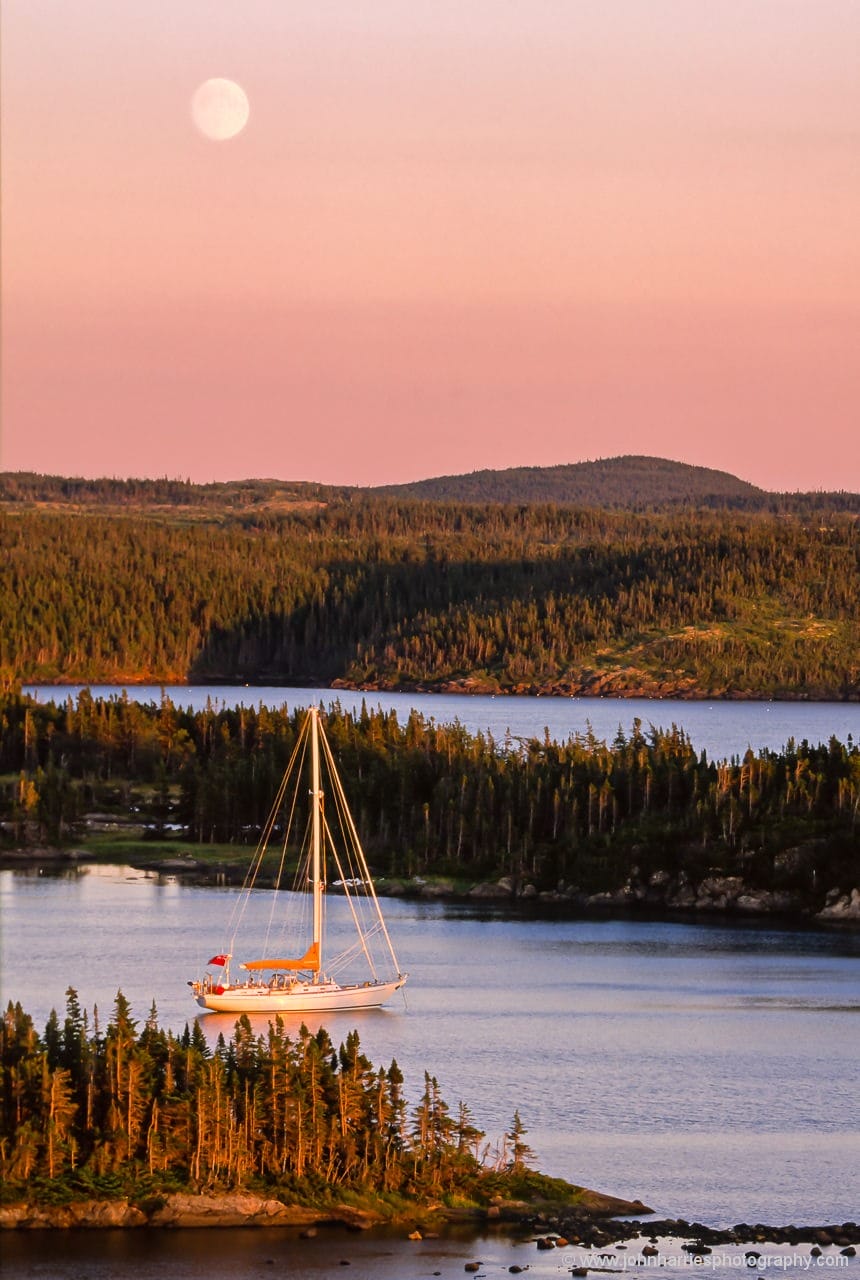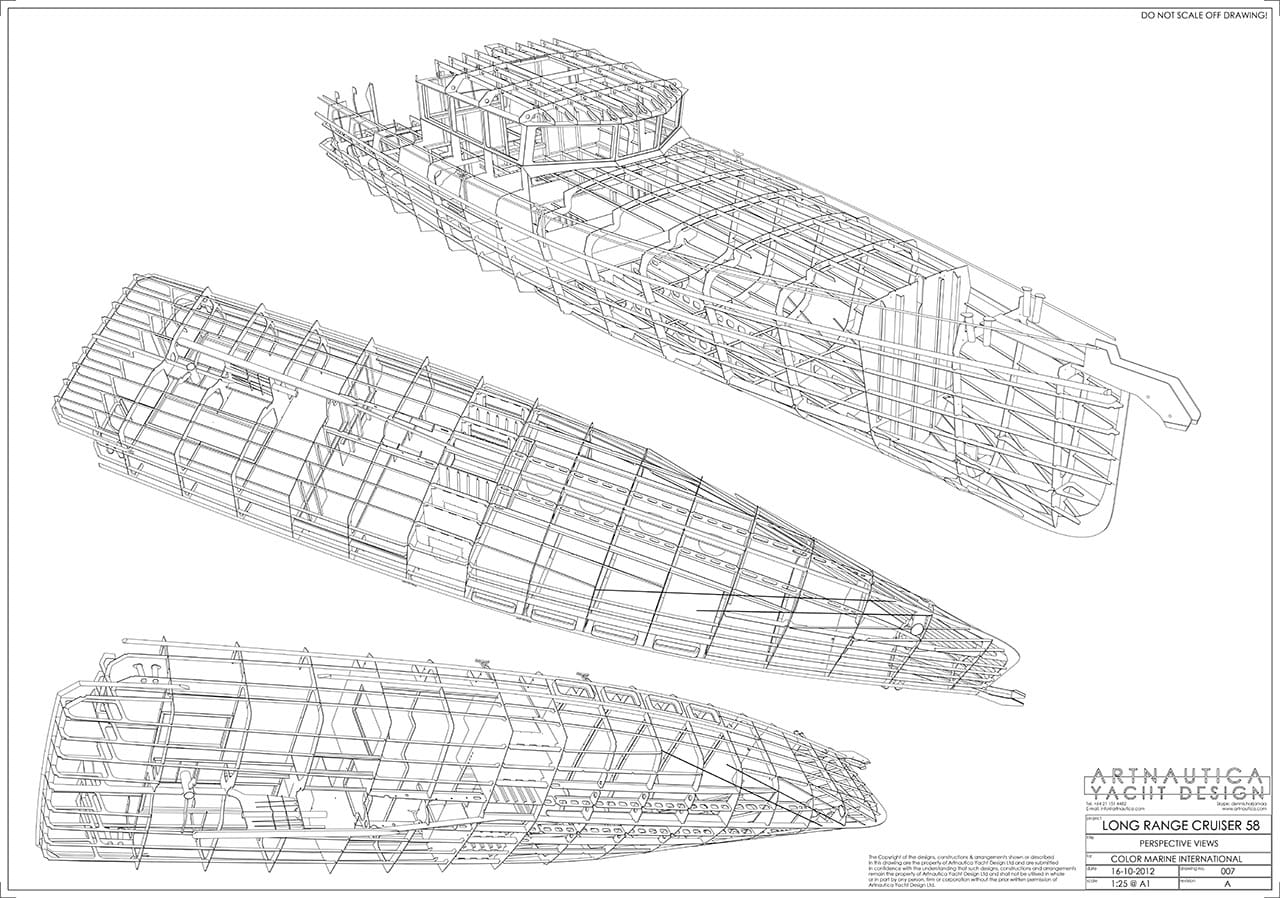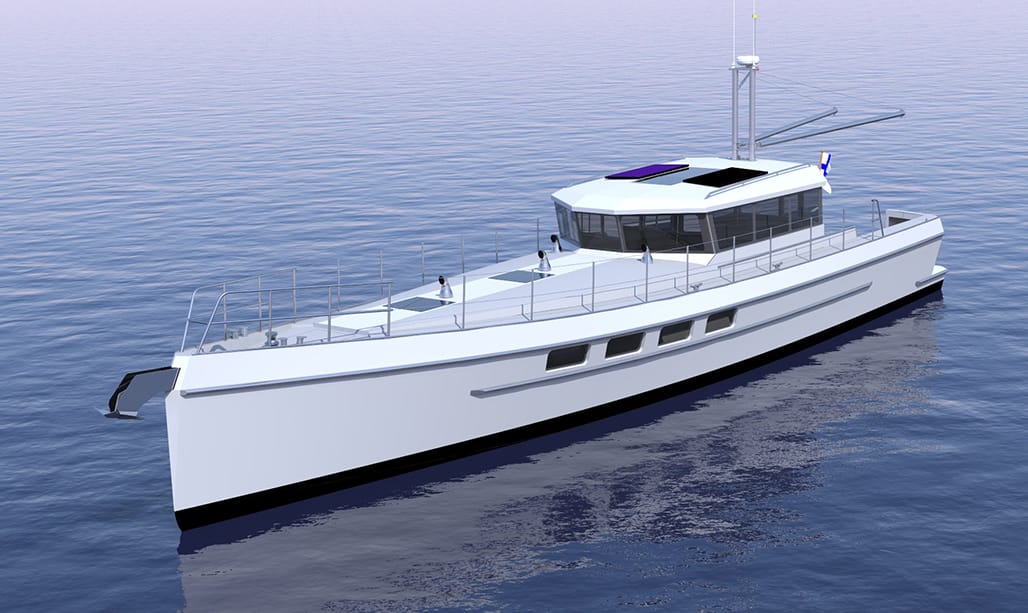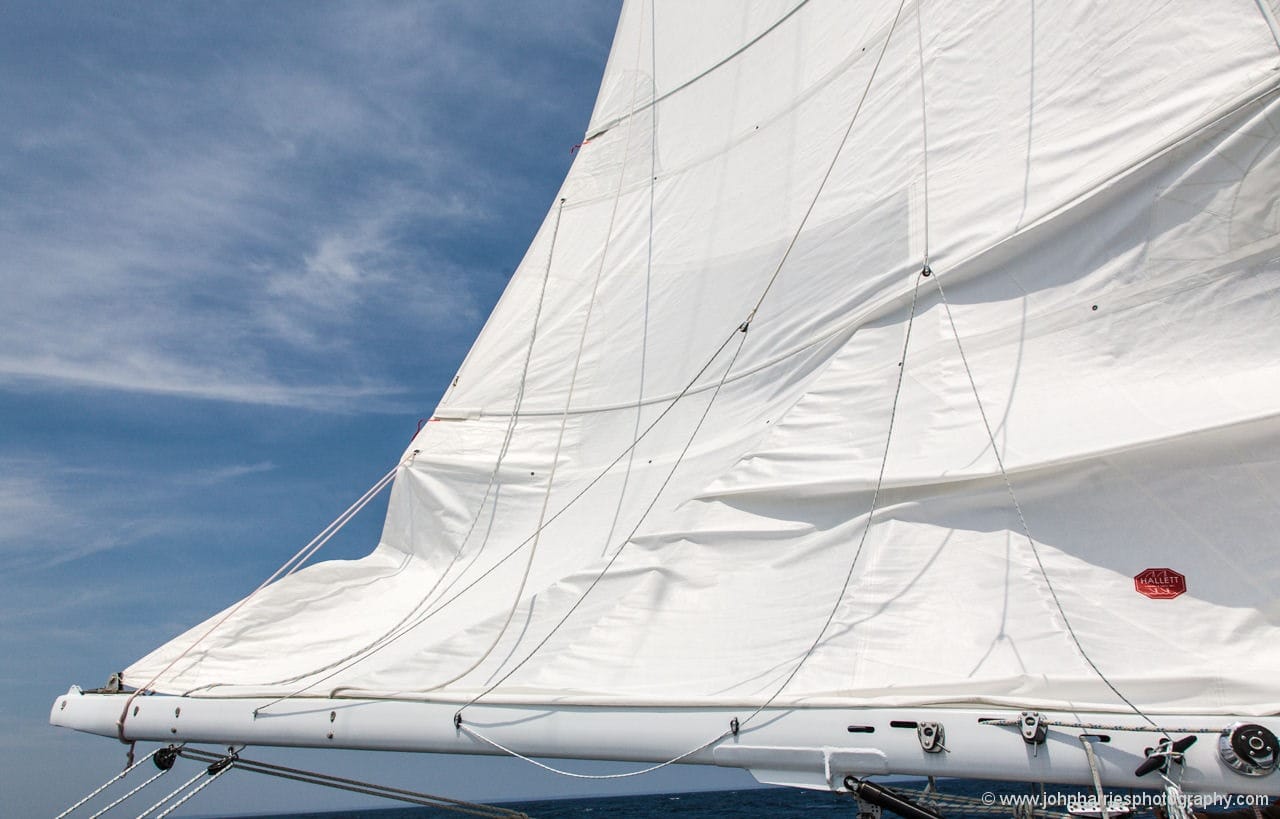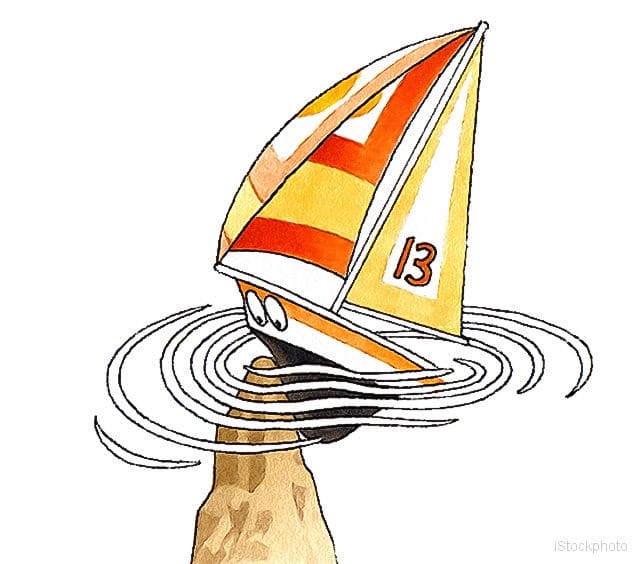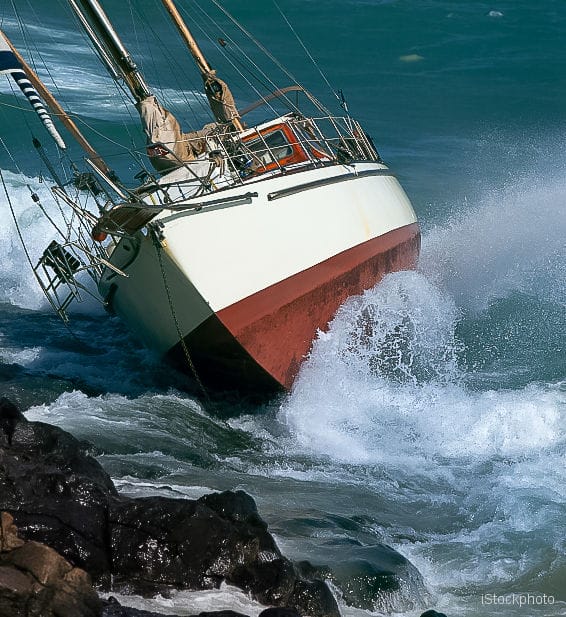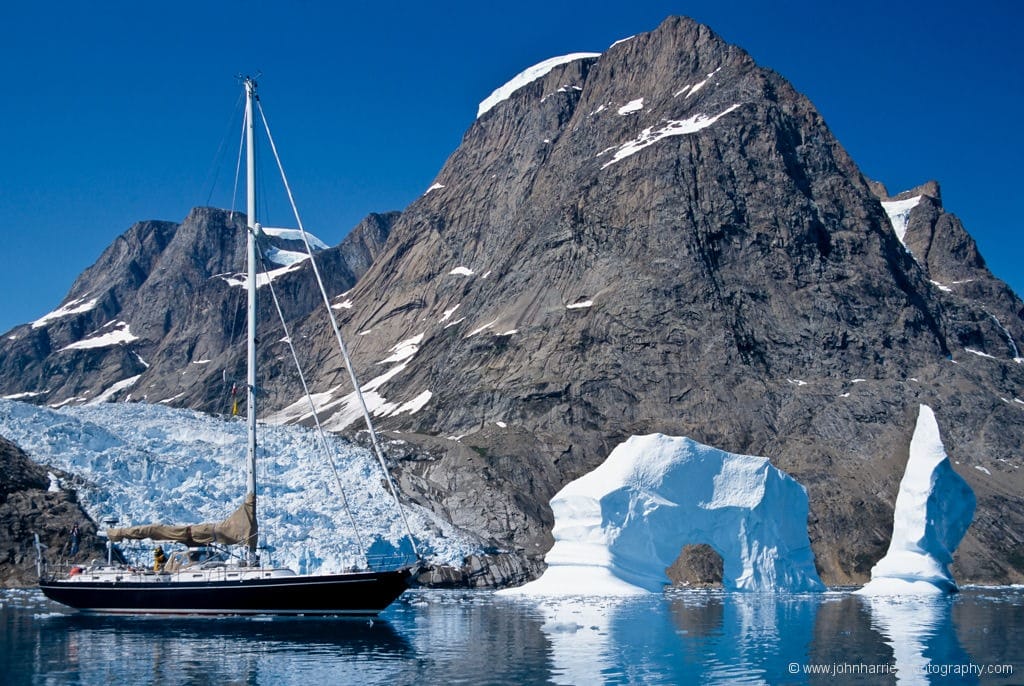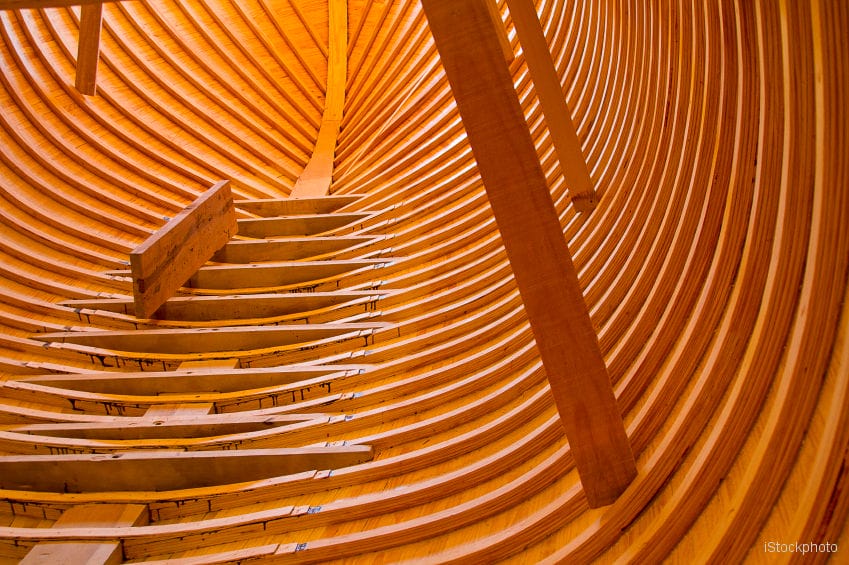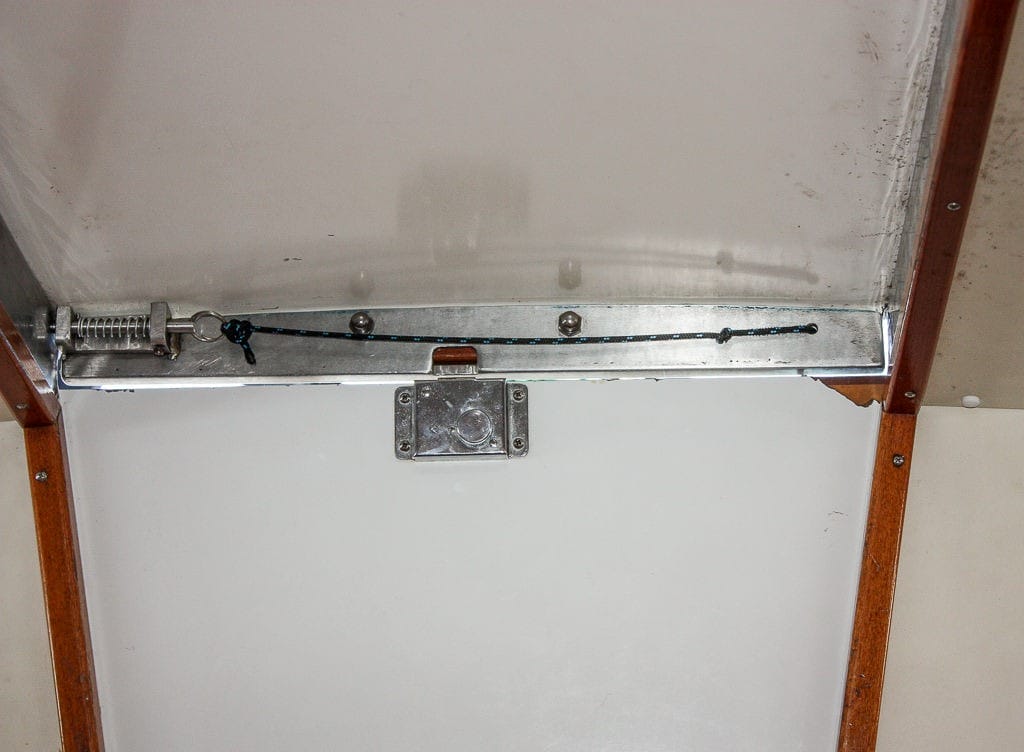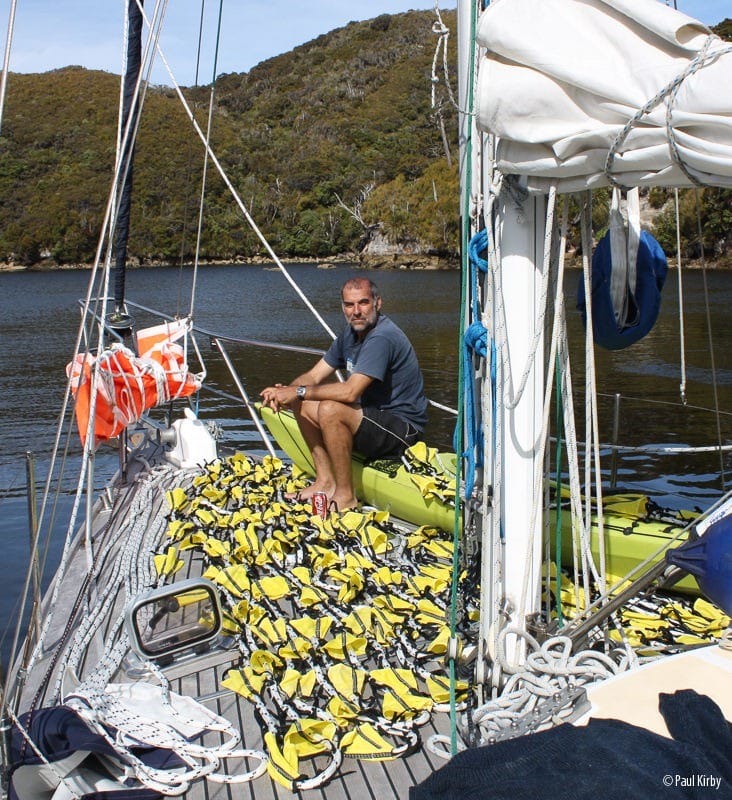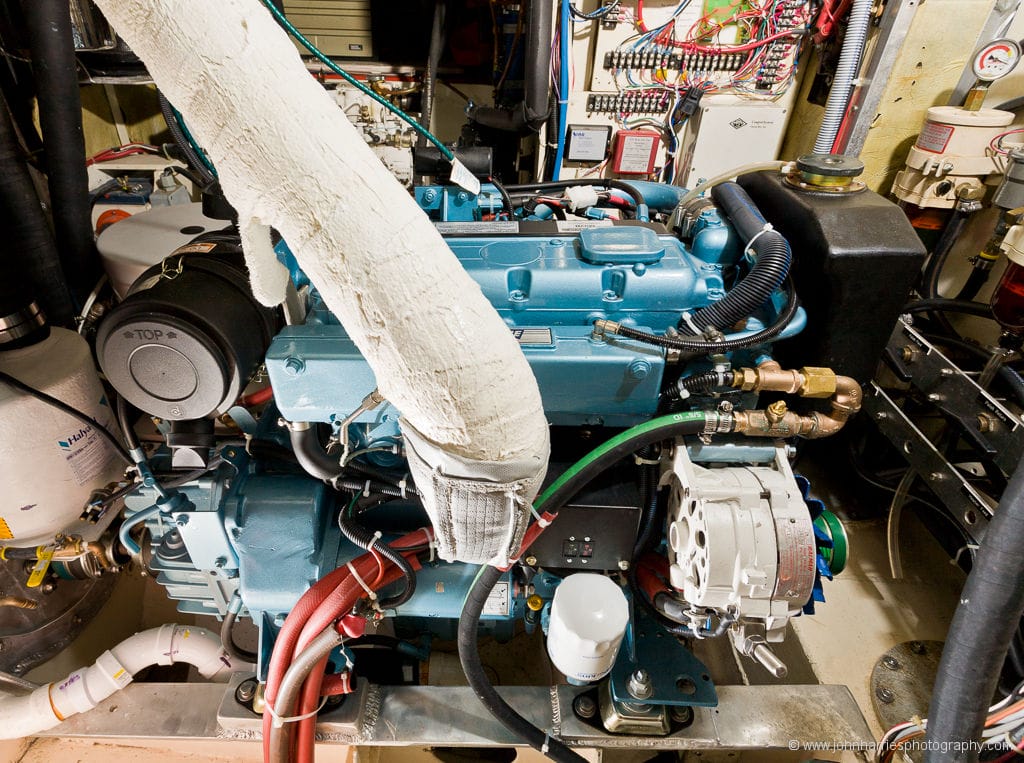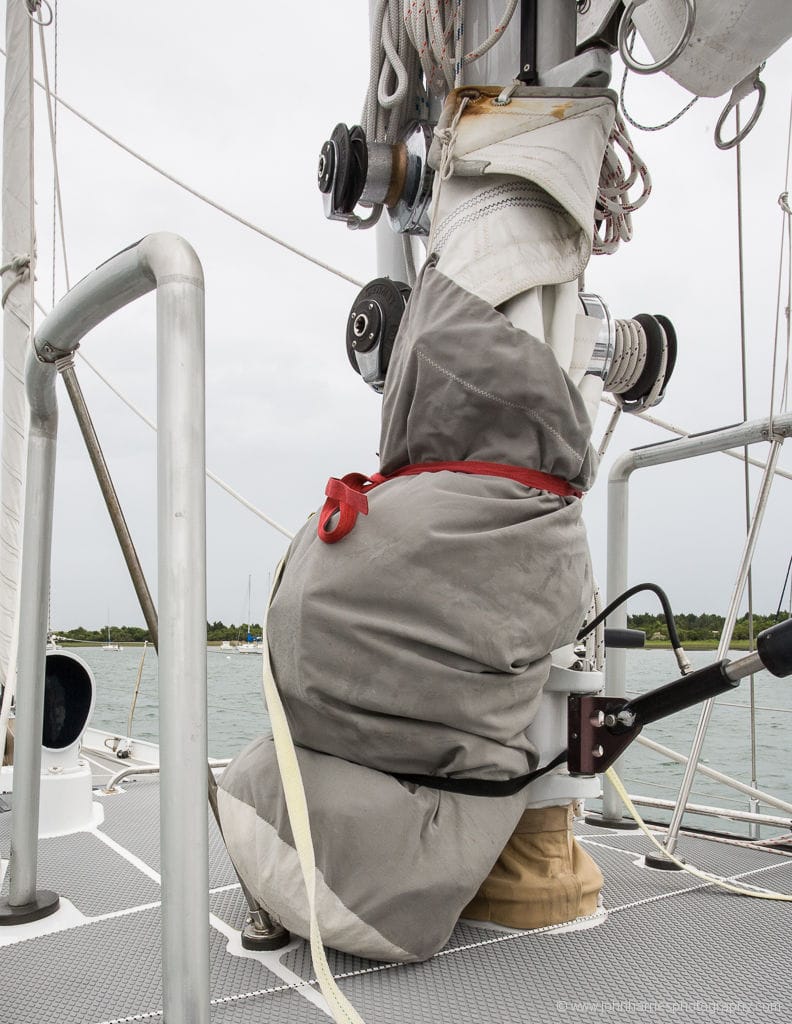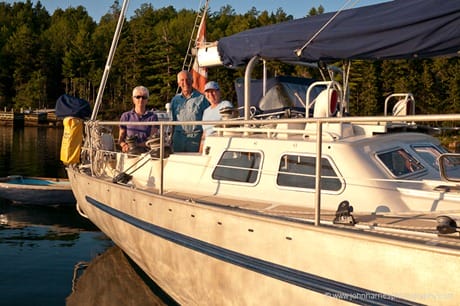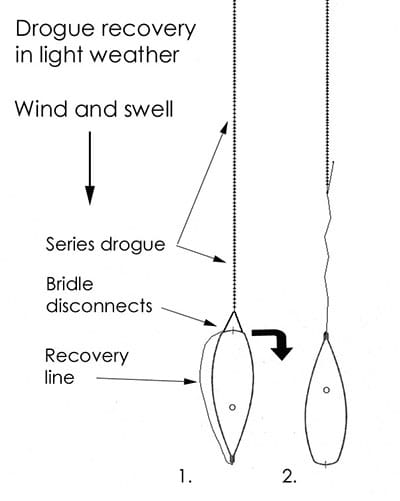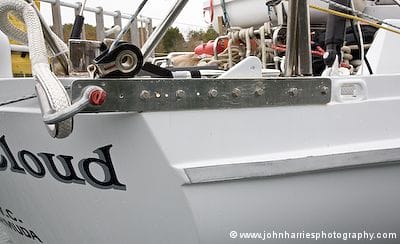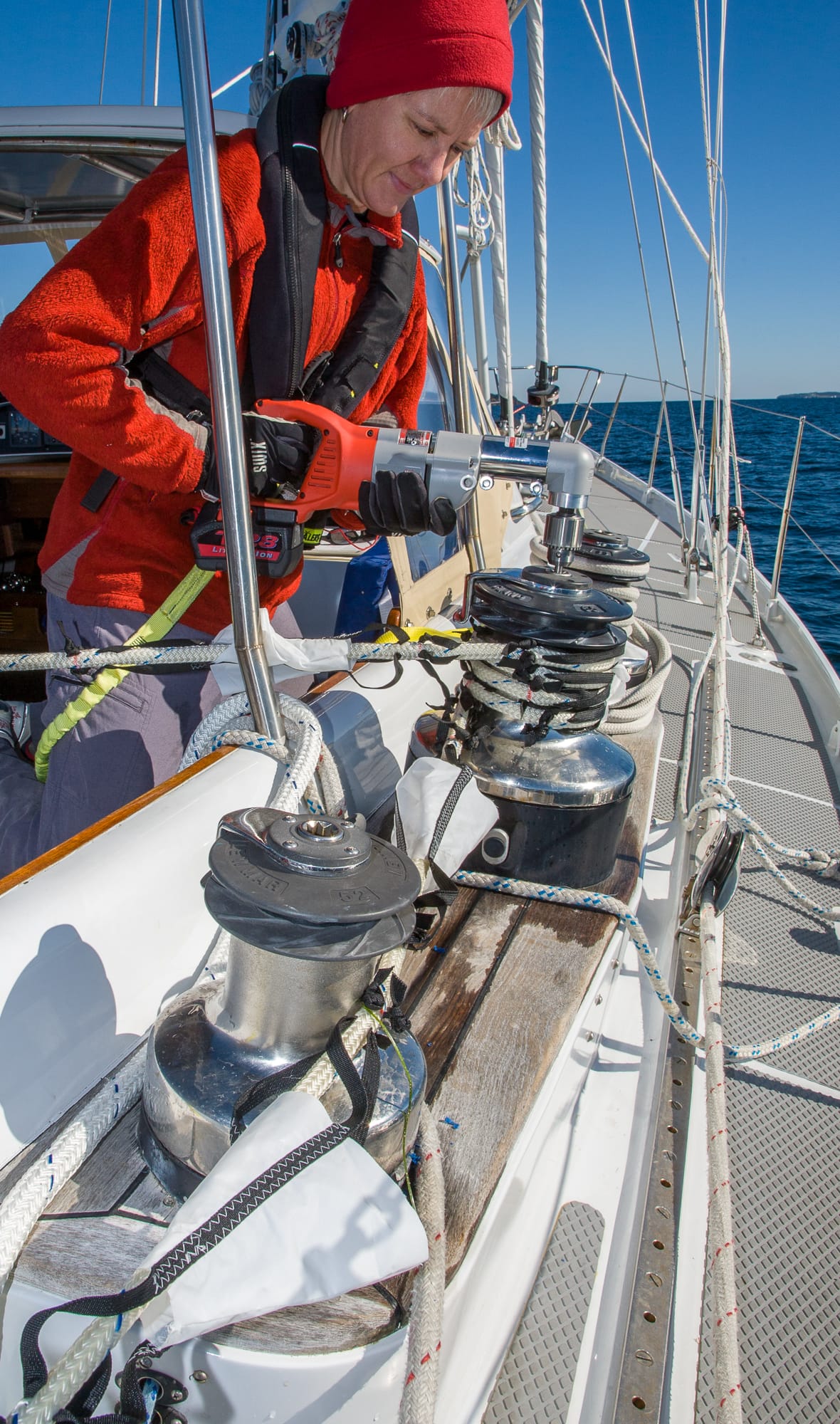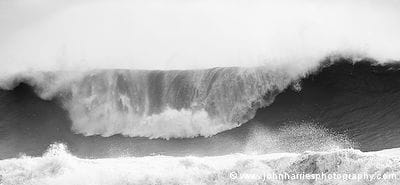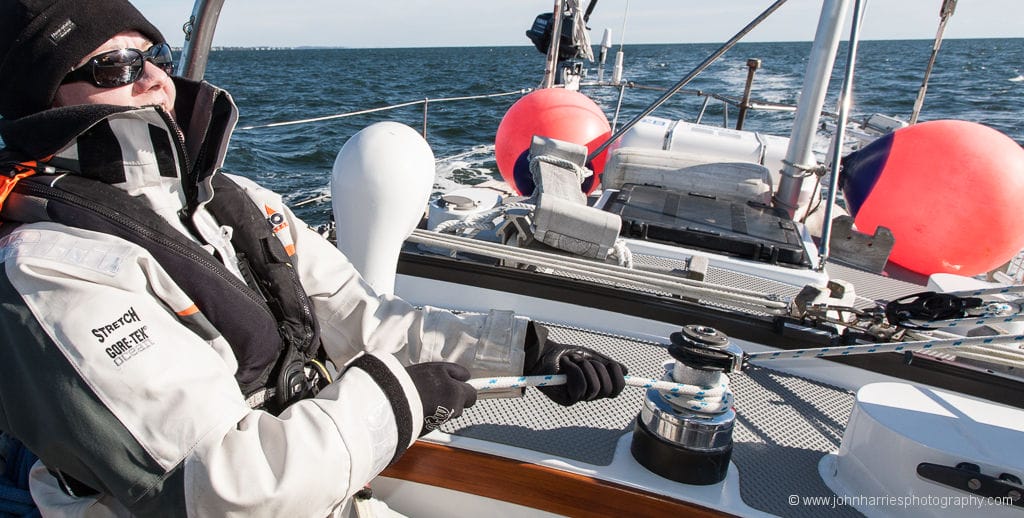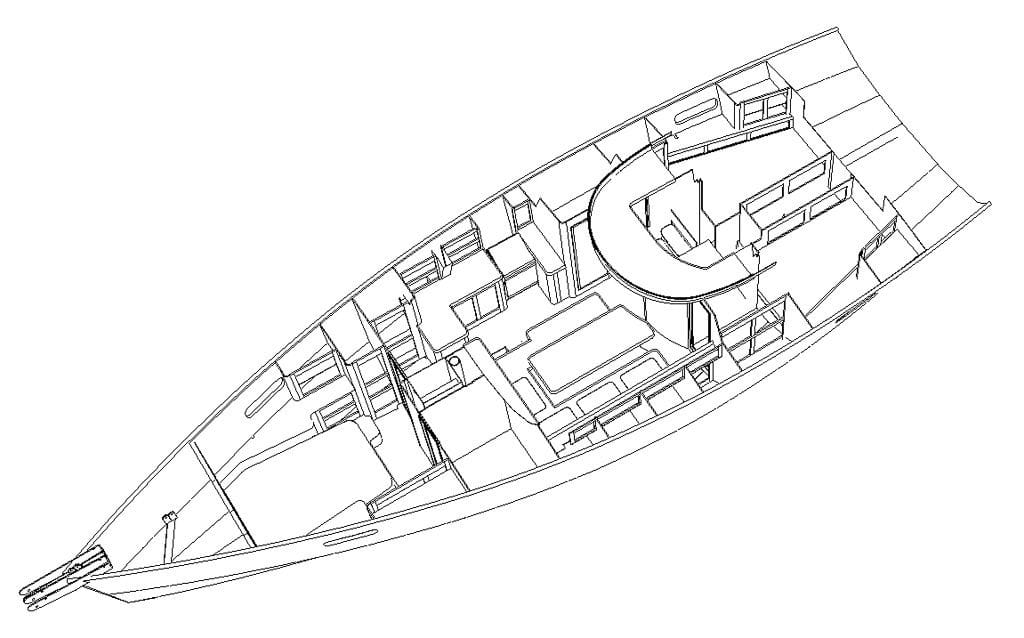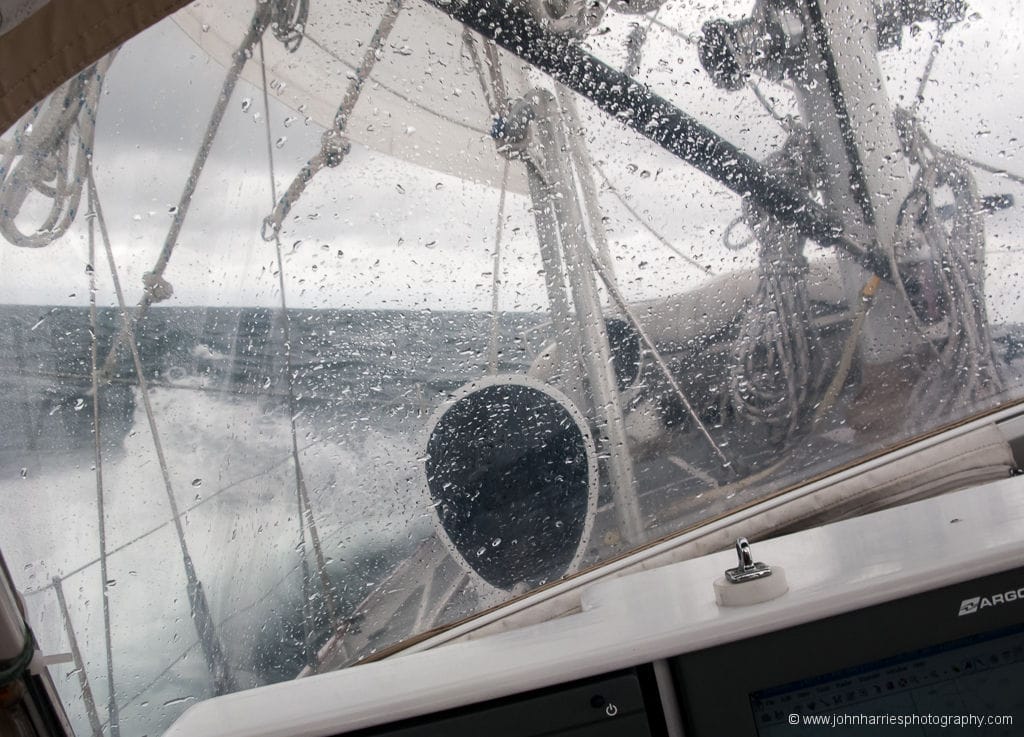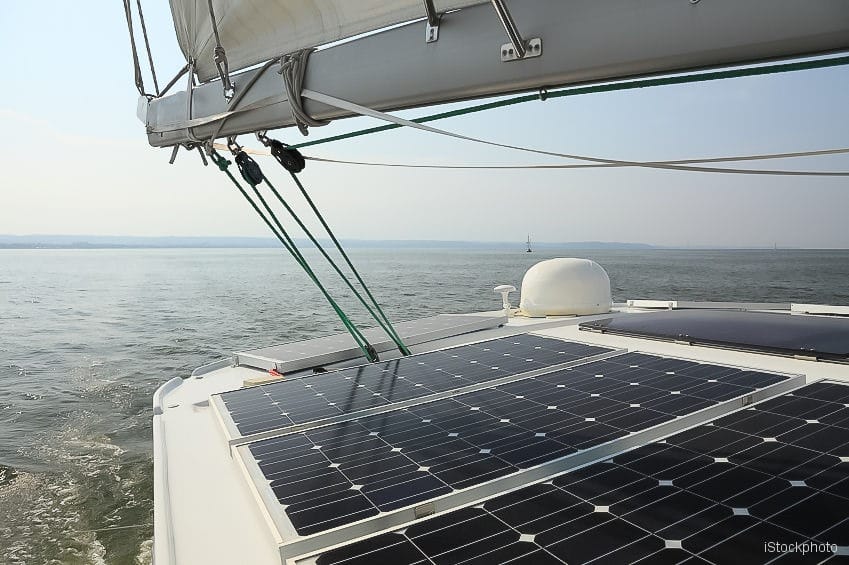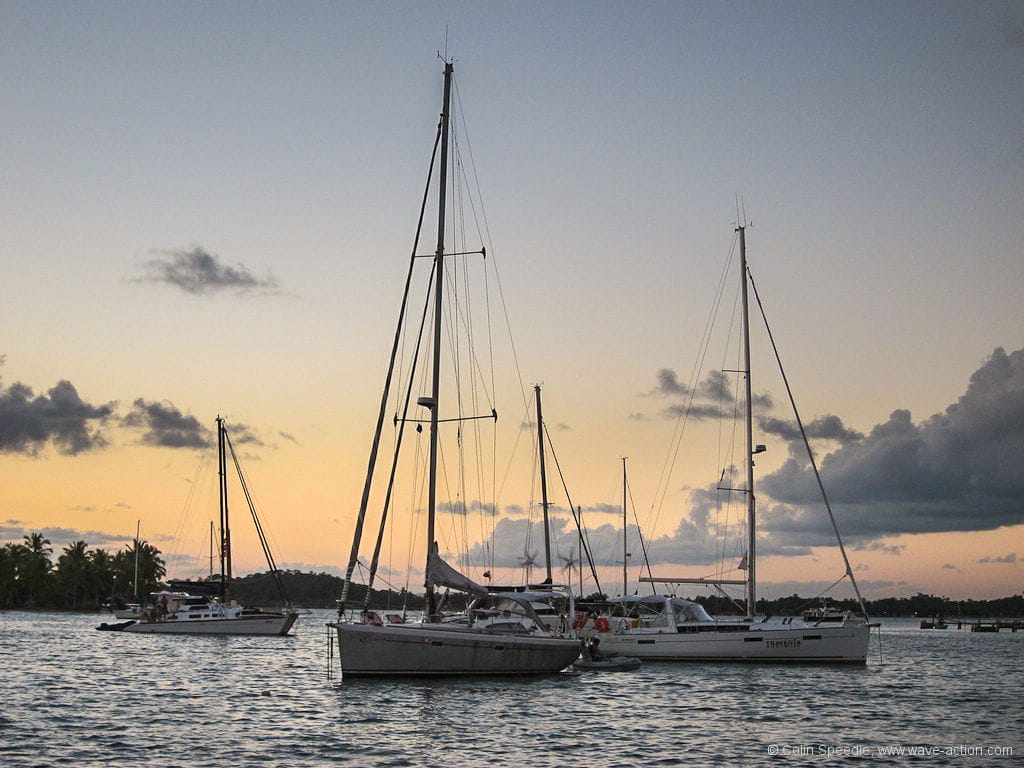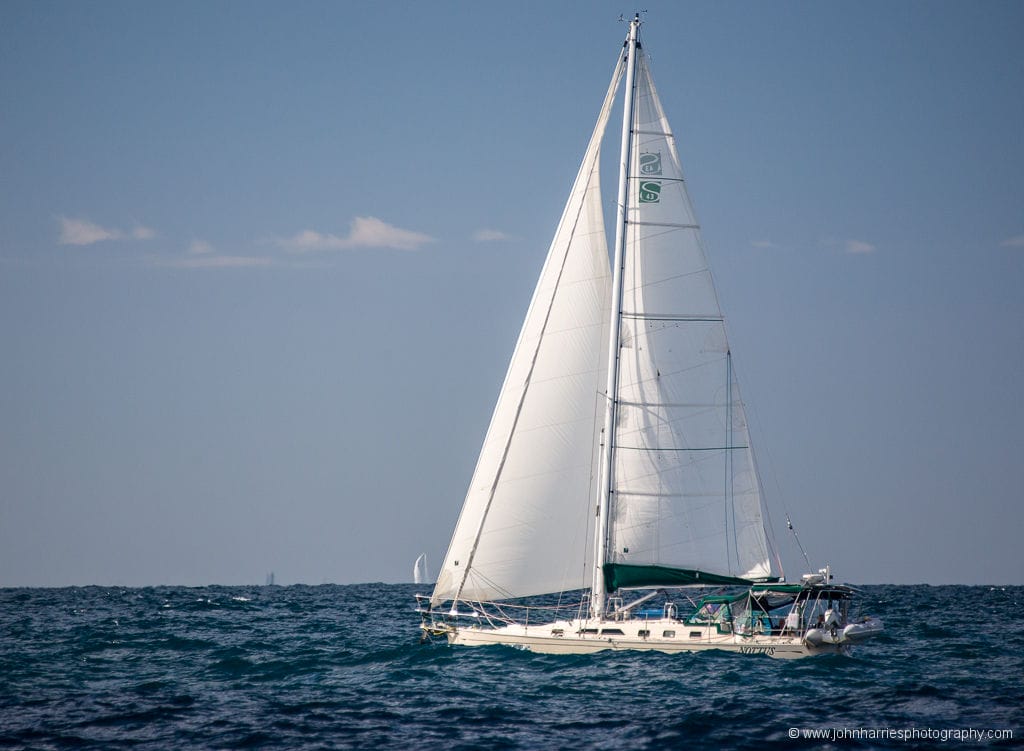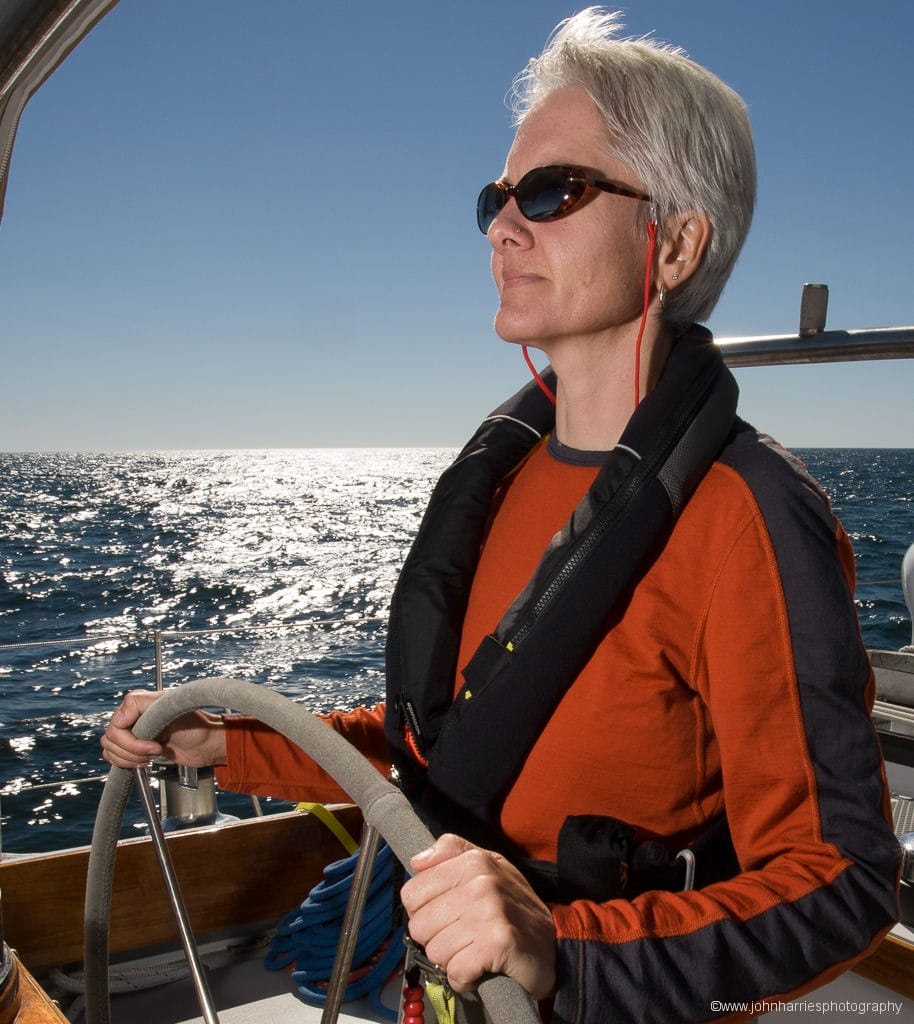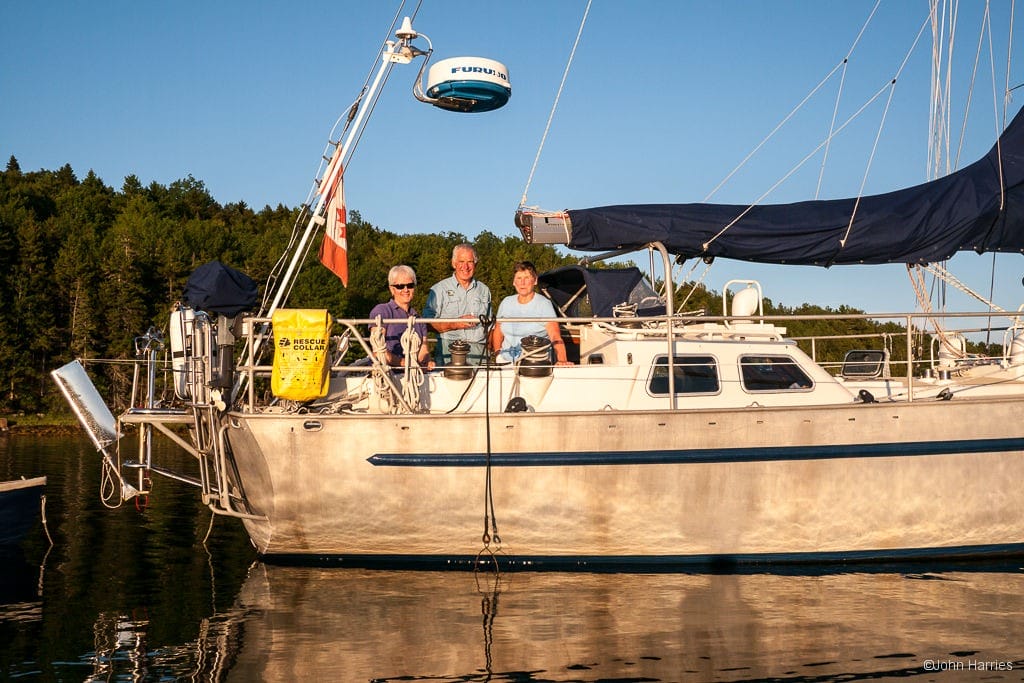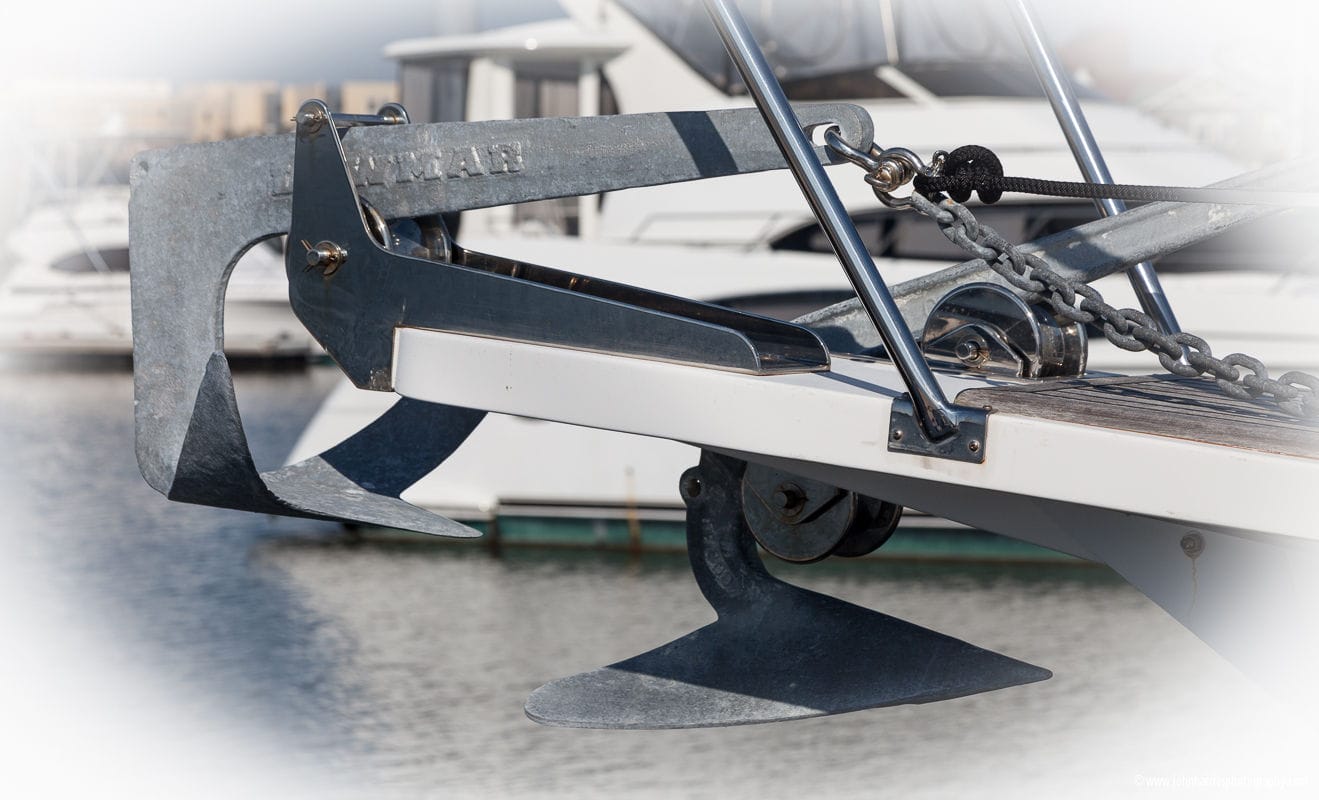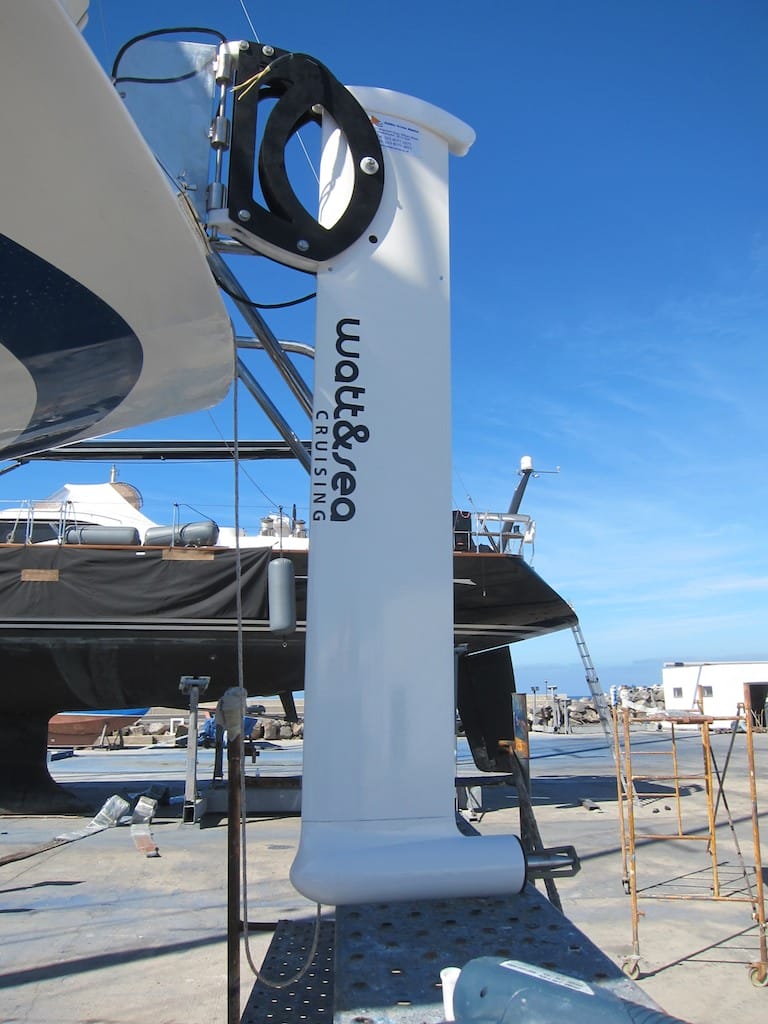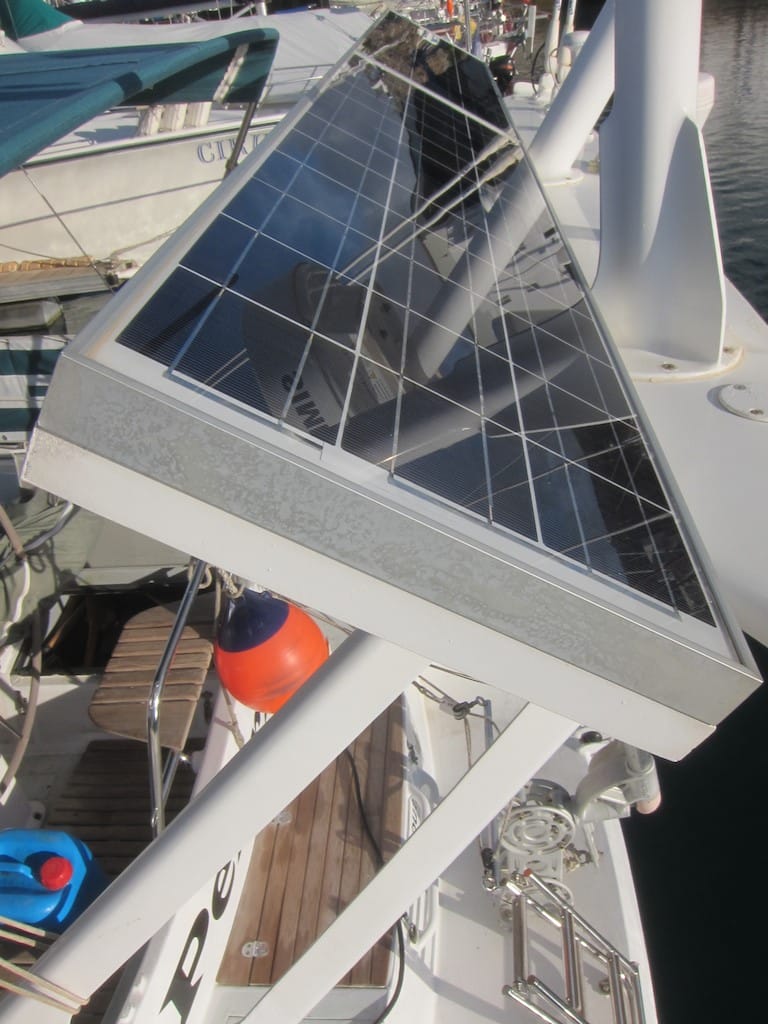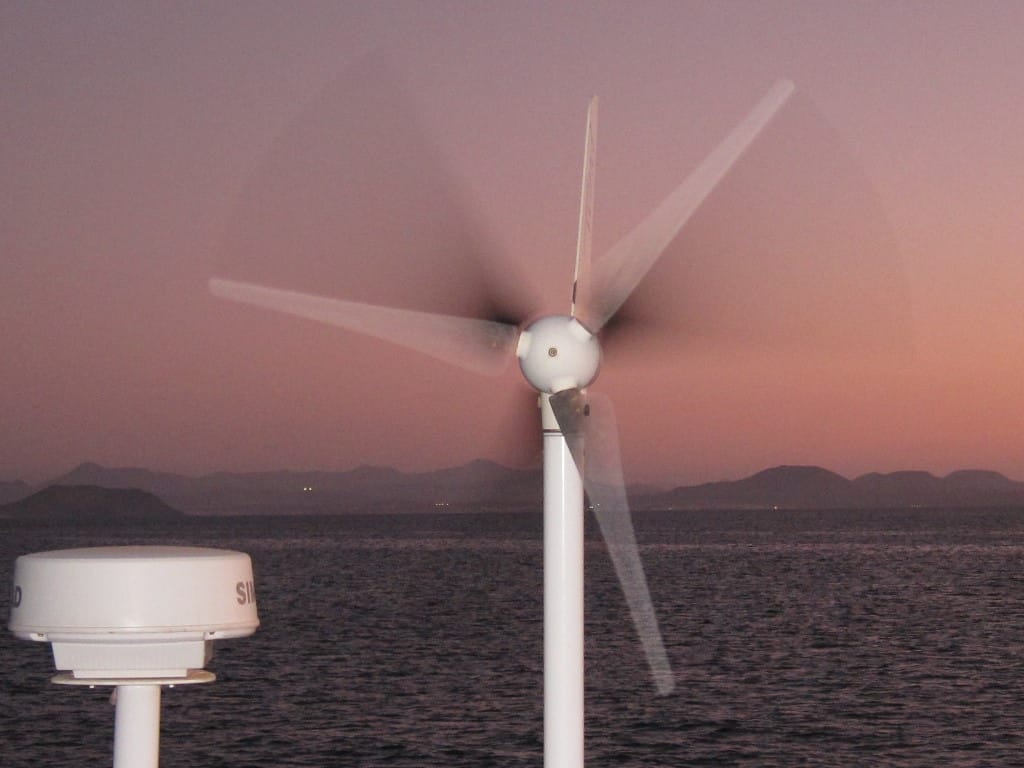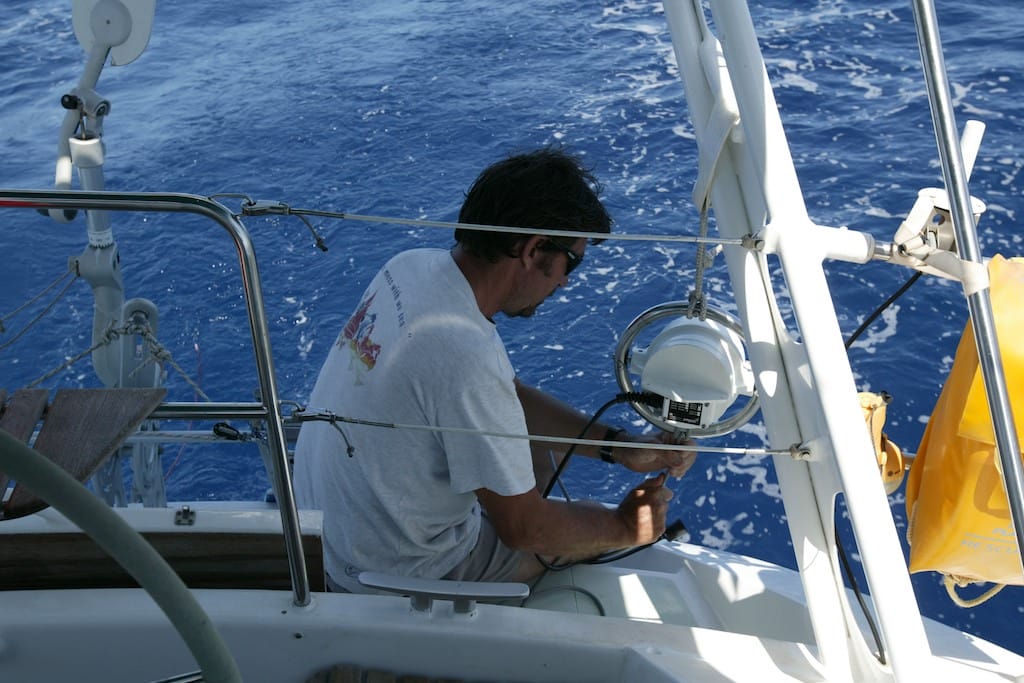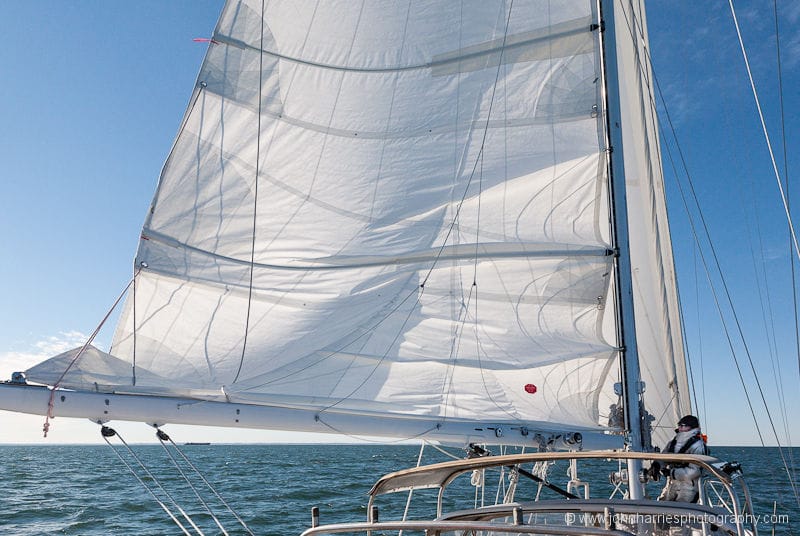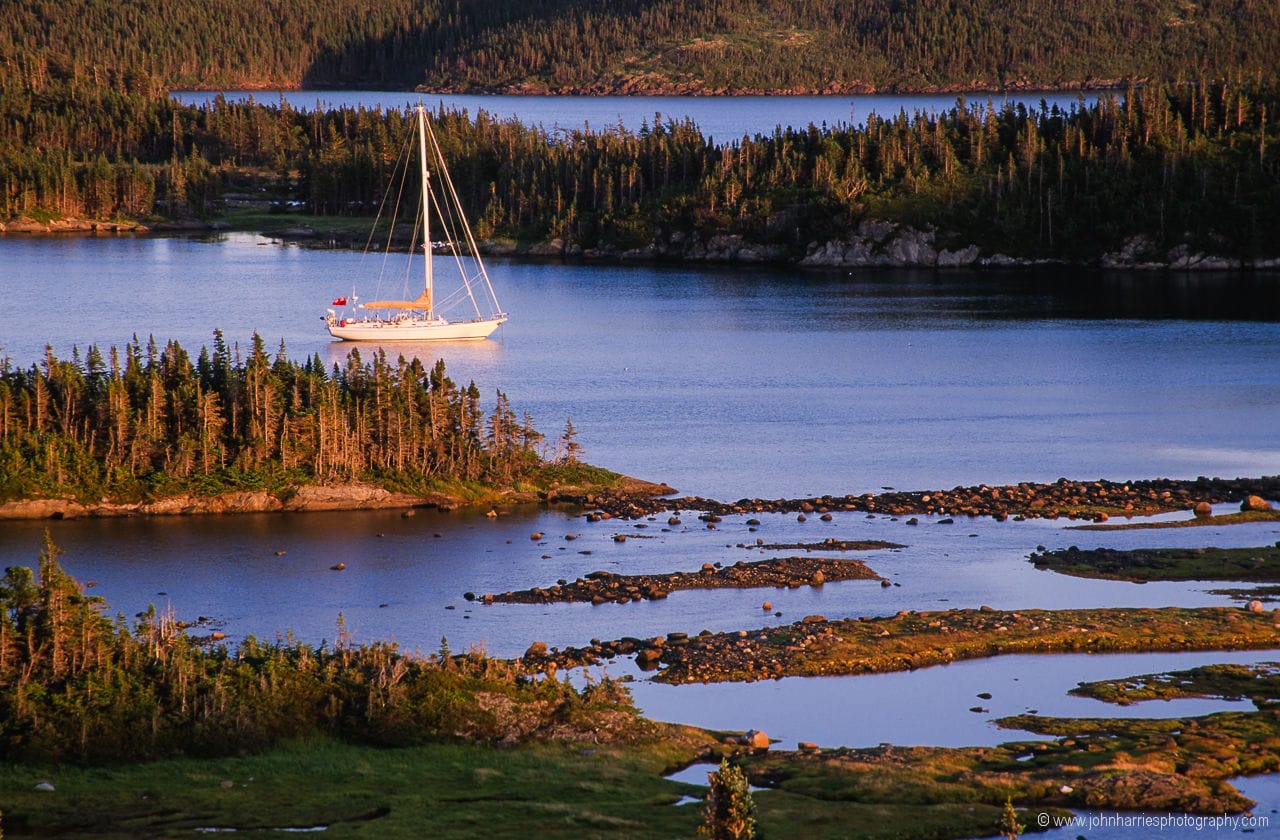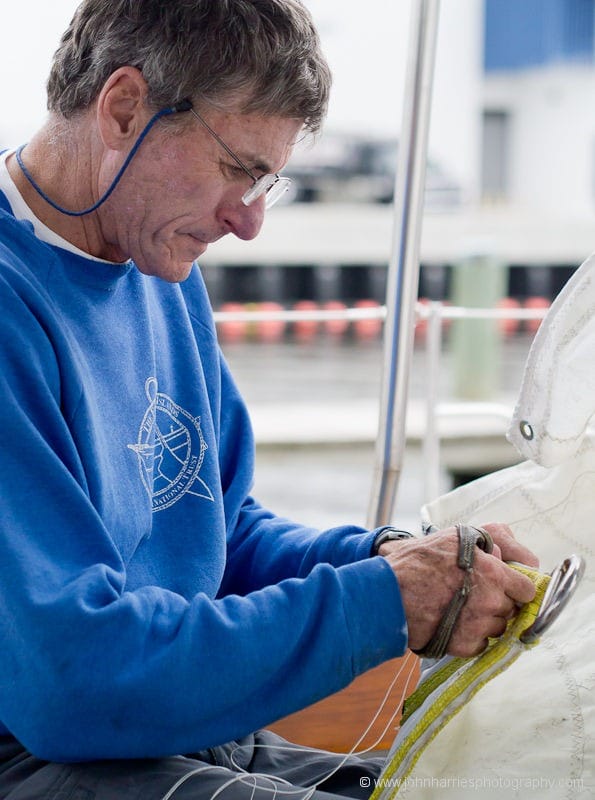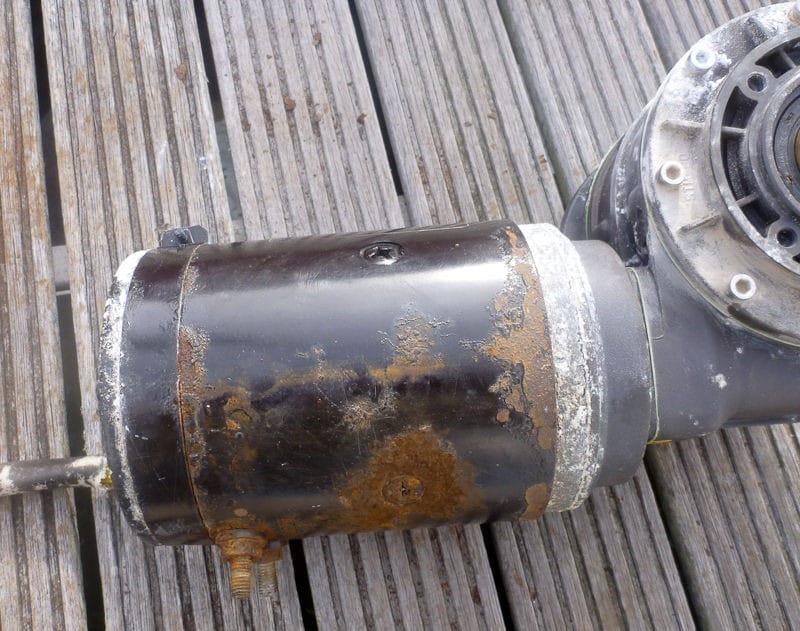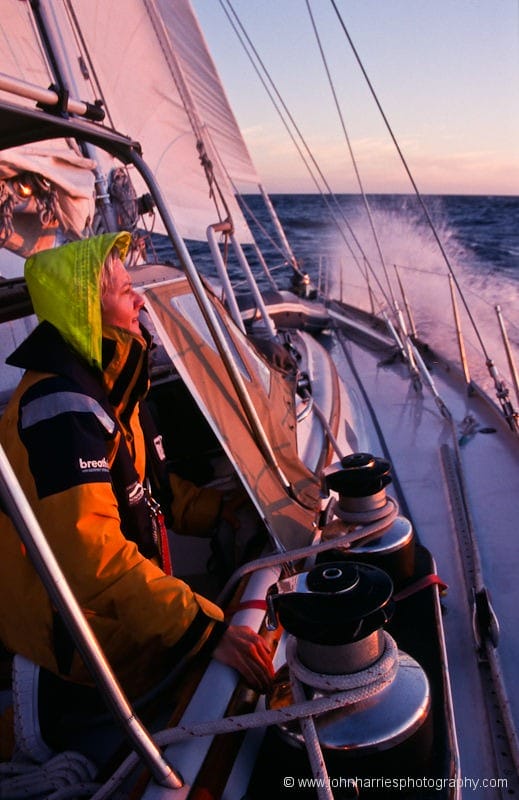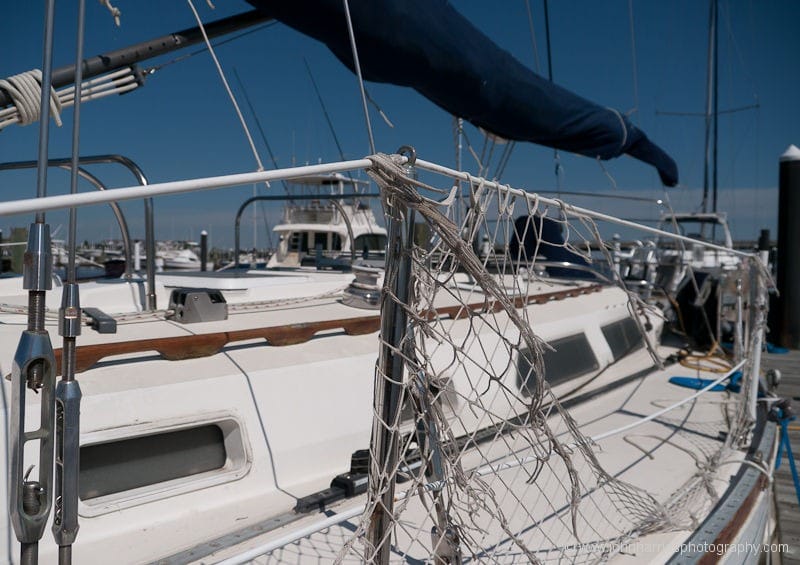MEMBERS
Click for TOC or scroll down for details
Articles in this topic:
- Orca Navigation System Review—Part 4, Orca App
- SailForce—A Better Electric Winch
- Five Tips To Get Ready For Happy Cruising
- Yet More Maintenance Tips
- Can We Make a $30,000 Cruiser Offshore Ready?
- Orca Navigation System Review, Part 3—Core Capabilities and Uses
- Orca Navigation System Review, Part 2—Core Installation and Setup
- Orca Navigation System Review, Part 1—Architecture and Display
- Victron AGM Super Cycle Battery Review
- Choosing The Right Alternator, Part 2—Other Criteria
- Choosing The Right Alternator, Part 1—Efficiency
- Forgiveness, The Forgotten Selection Factor
- Making Large Alternators Safer With Whitespace Programming
- 18 Tips To Install A Cruiser’s Alternator
- Efficient Generator-Based Electrical Systems For Yachts
- Right Sizing an Alternator
- Multihull and Monohull Storm Tactics Compared
- Catamaran, Trimaran, or Monohull—Capsize Risk
- Jackline Usage Thoughts
- Catamaran, Trimaran, or Monohull—Motion Comfort
- Limiting COB Drag Risk On A Smaller Boat
- Sail Buying Tips
- Radar Collision Avoidance, Part 2—Turning Plotting Into Action
- Flawed Jackline Systems Revisited
- Radar Collision Avoidance, Part 1—Plotting
- TeamO Backtow Lifejacket/Harness Review
- 20 Practical Tips For Better Watchkeeping
- Reefing Tips
- 6 Tips For Mindful Watchkeeping
- How Many Reefs and How Deep?
- The Risks Of Sidedeck Jacklines Quantified
- 11 Tips For A Good Watch System
- Building a Robust and Practical Hard Dodger
- Tether Tension On A Dragging Crew Overboard
- 8 Offshore Cruising Boat & Gear Evaluation Tips
- Rigging Tips Part 2
- Spinlock Deckvest 6D Review
- Safe and Easy Offshore Sailing—When to Reef, Part 2
- Electrical Tips
- Why We Don’t Recommend Boom Brakes
- Safe and Easy Offshore Sailing—When to Reef, Part 1
- Building A Safer Boom Preventer, Part 3—The Details
- A Small-Boat Anchoring System
- When Is A Cruising Sailboat Too Big?
- Is Your Engine Properly Fused?
- Better Jacklines
- Building A Safer Boom Preventer, Part 2—Line and Gear Strength Calculator
- Building A Safer Boom Preventer, Part 1—Forces and Angles
- Surviving Storms While Coastal Cruising—21 Preparation Tips
- Rebuilding a Cobra Yacht Steering System—Reassembly
- Surviving Storms While Coastal Cruising—9 Tips for Anchorage and Harbour Selection
- Rebuilding a Cobra Yacht Steering System—Disassembly and Inspection
- Surviving Storms While Coastal Cruising—12 Strategy Tips
- 10 Reasons Why Hybrid Lithium Lead-Acid Systems are a Bad Idea
- Converting a Racing Sailboat to a Fast Cruiser—Performance and Rig
- Hurricane Mooring Weight Recommendation
- Lithium Buyer’s Guide—Budget: Economy Options
- Applying Power and Torque
- Hurricane Mooring Pennant Photo Article
- Understanding Power and Torque
- Lithium Buyer’s Guide—Budget: High End System
- Close to Home, Yet Far Away
- Wakespeed WS500 Compared To ARCO Zeus—What Matters
- 63 Cruising Boat Maintenance Tips
- Adventure 40 Electrical System—Part 1, Voltage and Batteries
- Deck Hardware Mounting Photo Essay
- Lithium Battery Buyer’s Guide—Fusing
- The Rolling Refit Continues
- Lithium Batteries Buyer’s Guide—Current (Amps) Requirements and Optimal Voltage
- The Zen of Sail Covers
- Lithium Batteries Buyer’s Guide—Balancing and Monitoring
- Selecting The Right Hull Form
- Lithium Batteries Buyer’s Guide—BMS Requirements
- Why We Have an eWincher on a Small Boat
- Electronic Chart Dangers
- Review of Ocean Signal PLB3 Against MOB1
- Weather Analysis—Part 2, Strategic
- Weather Analysis—Part 1, Tactical
- Yes, You Can Have an Offshore Sailboat For Less Than $US100,000
- Spade Anchor Failure, Update and Summary
- Weather Analysis—Hardware and Software
- Bilge Alarms And Monitoring
- Bent Spade Anchor Analysis
- 9 Tips to Assess Weather Forecast Accuracy
- Easily Driven Boats Are Better
- Sailing a New-To-Us Boat Home—What Could Go Wrong?
- Replacing Diesel-Generated Electricity With Renewables, Part 2—Case Studies
- Replacing Diesel-Generated Electricity With Renewables, Part 1—Loads and Options
- How Weight Affects Boat Performance and Motion Comfort
- Adventure 40 Cockpit 2.0
- Falmouth For Orders
- Watt & Sea Hydrogenerator Buyer’s Guide—Cost Performance
- To Sea At Last
- 11 Tips To Save Your Engine From Overheating
- Safety Inspection and Gear For a New-To-Us Boat
- Fire Extinguishers We Have Bought and Stuff We Learned
- Liferafts For Cruisers—Positioning and Mounting
- Starting With The Basics On A New-To-Us Cruising Boat
- Going Up The Mast—More Improvements
- Liferafts For Cruisers—40 Years of Real-World Experience
- Nine Autopilot Usage Tips and Hacks
- Liferafts For Cruisers—Purchase Criteria
- How To Tune An Autopilot To Steer Better—Part 2
- Finding and Buying a Dream
- Adventure 40 Deck-2.0
- How To Tune an Autopilot to Steer Better—Part 1
- Autopilot Buyer’s Guide
- Storm Strategy—Fore-Reaching
- Colin and Louise Have a New Boat
- Eight Steps to Get Ready For Lithium Batteries
- Q and A—Trucking a Boat
- A Real World Tested Tool Kit For Cruisers
- Five Boat Lift Usage Tips
- Adventure 40 Reveal—Salon and Forward Cabin
- Balancing Battery Bank and Solar Array Size
- Going Up The Mast at Sea
- Adventure 40 Reveal—Galley, Head, and Aft Storage
- Gear Leveling and Mounting Hack
- Going Up The Mast—Four Dangerous But Common Mistakes
- How To Do Amateur Engineering¹
- Going Up The Mast—Our System
- Going Up The Mast—Fundamentals
- Adventure 40 Reveal—On Deck
- Going Up the Mast—An Industrial Fall Prevention Approach
- Adventure 40 Reveal—Hull, Cockpit, and Rig
- In-Mast, In-Boom, or Slab Reefing —Performance, Cost and Safety
- In-Mast, In-Boom, or Slab Reefing—Convenience and Reliability
- Cross-Bank Battery Charging—DC/DC Chargers
- Cross-Bank Battery Charging—Splitters and Relays
- Battery Bank Separation and Cross-Charging Best Practices
- How Hard Can We Charge Our Lead-Acid Batteries?
- Choosing & Installing Battery Switches
- Battery Containment—Part 1
- 5 Safety Tips For Working on Boat DC Electrical Systems
- Building a Seamanlike Lithium Battery System
- Two More Shore Power Safety Upgrades
- 9 Tips To Select Seamanlike Gear
- Download Cruising Sailboat Rig Checklist
- When Stuff Goes Wrong At Sea
- 8 Tips To Prevent Lithium Battery Black Outs
- Why Lithium Battery Load Dumps Matter
- Cruising Sailboat Roller Furler and Track Inspection
- Positioning of Wood Plugs For Seacocks
- The True Price of Autopilots & Vane Gears
- Cruising Sailboat Rig Wiring and Lighting Inspection
- 7 Checks To Stop Our DC Electrical System From Burning Our Boat
- 11 Self-Steering Vane Gear Installation and Usage Tips
- Why Most New-To-Us Boat Electrical Systems Must Be Rebuilt
- Cruising Sailboat Running Rigging Inspection
- 12 Cruising Boat Maintenance Tips
- Wakespeed WS500—Best Alternator Regulator for Lead Acid and Lithium Batteries
- Cruising Sailboat Standing Rigging Inspection
- Cruising Sailboat Spar Inspection
- Test Sail and Review of The Boréal 47.2
- Going Alongside (Docking)—12 More Tips and Tricks
- John Goes Sailboat Racing and Learns Stuff
- Protecting Our Boat’s Underwater Metals From Corrosion
- Going Alongside (Docking) in Current—Backing In
- Details Matter—Engine Failure at Sea
- Going Alongside (Docking) in Current—Turning in Confined Spaces
- Going Alongside (Docking) in Current—Fundamentals
- Helping a Member Choose an Anchor
- A Good First Aid Kit
- Why I Won’t Power Our Boat With a Portable Generator
- Setting and Striking a Spinnaker Made Easy and Safe
- Check Your Boat Shore Power System
- Our New Boat Selection Process—Fitness For Mission
- Cruiser’s Tool Kit—Wrenches
- 29 Tips To Get Insurance For Offshore Voyaging—Negotiating Cover
- 29 Tips To Get Insurance For Offshore Voyaging—Us and Our Boat
- Cruiser’s Power Tool Kit
- Leaving a Dock Against an Onshore Wind—Part 2
- Leaving a Dock Against an Onshore Wind—Part 1
- Getting Insurance For Offshore Voyaging—Understanding The Problem
- 14 Tips To Come Alongside Single-Handed—Part 2
- 14 Tips for Coming Alongside Single-handed—Part 1
- Integrating and Documenting NMEA 0183 and 2000 Networks
- Two More Anchor Selection Criteria
- Making Anchor Tests More Meaningful
- Choosing A Cruising Boat—Shade and Ventilation
- When Electric Drive Works For a Cruising Sailboat
- Roller Furling Headsail Risks and Rewards
- Choosing a Cruising Boat—Shelter
- Q&A—Sailboat Performance, When The Numbers Fail
- Offshore Sailboat Winches, Selection and Positioning
- Best Offshore Boat Cockpit Cushions
- Buying a Boat—A Different Way To Think About Price
- Safety: We Can’t Do Or Even Learn About It All
- Cockpits—Part 2, Visibility and Ergonomics
- Cooking Options For Live-aboard Voyagers—Part 2, Liquid Fuel
- Cooking Options For Live-aboard Voyagers—Part 1, Electric
- Cockpits—Part 1, Safe and Seamanlike
- Should Your Boat’s DC Electrical System Be 12 or 24 Volt?—Part 2
- Should Your Boat’s DC Electrical System Be 12 or 24 Volt?—Part 1
- Topping Lift Tips and a Hack
- The Danger of Voltage Drops From High Current (Amp) Loads
- Rigid Vangs
- Maretron—Better NMEA 2000 Cabling
- Is Induction Cooking For Boats Practical?
- eWincher Electric Winch Handle Review—Part 3, Reliability and Summary
- eWincher Electric Winch Handle Review—Part 2, The Competition
- eWincher Electric Winch Handle Review—Part 1, Our Testing
- Second Level Thinking About Offshore Voyaging Boats
- Sailboat Deck Layouts
- US$30,000 Starter Cruiser—Part 2, The Boat We Bought
- US$30,000 Starter Cruiser—Part 1, How We Shopped For Our First Cruising Sailboat
- Washing Machines: Complexity and Space Considerations
- Planning a Refit— Keel Removal and Inspection
- Q&A Backing Out of a Bow-In Med Moor
- Two New Designs From Boréal
- Stupid Alternator Regulators Get Smarter…Finally
- Sail Area: Overlap, Multihulls, And Racing Rules
- Torquing Keel Bolts
- Refits—The Radical Option
- Non-Destructive Testing of Keel Bolts
- Cruising Rigs—Sloop, Cutter, or Solent?
- Offshore Sailboat Keel Types
- Outbound 46 Review—Part 2, Keel, Rudder, Bow Thruster, and Construction
- Planning and Budgeting an Engine Rebuild or Replacement
- Outbound 46 Review—Part 1, Hull Form
- Planning a Refit—Upfront Costs
- ShoreFasts—Part 3, The Gear
- ShoreFasts—Part 2, Example Setups Plus Tips and Tricks
- ShoreFasts—Part 1, When to Use Them
- Planning a Refit—Rudders, Repair or Replacement
- Planning a Refit—The Problem With Rudders
- Yawing at Anchor, The Theory and The Solution
- Planning a Refit—Boat Parameters
- Retrieval of Dyneema (Spectra) Series Drogues Solved
- Planning a Refit—It’s a Lot About You
- Anchoring—Chain: Stoppers, Termination and Marking
- A Sail Away Offshore Cruising Boat For Less Than US$100,000—Best Hull Material
- Anchoring—Kellets
- A Sail Away Offshore Cruising Boat For Less Than US$100,000—Rudders and Keels
- A Sail Away Offshore Cruising Boat For Less Than US$100,000—Decks, Hulls and SS Fittings
- Anchoring—Snubbers
- A Sail Away Offshore Cruising Boat For Less Than US$100,000—Introduction
- Four Hand Tools I Should Have Bought Years Ago
- The Garcia Exploration 45 Compared to The Boréal 47—Part 5, Interior, Summary and Price
- The Garcia Exploration 45 Compared to The Boréal 47—Part 4, Inside Watch Stations
- Insanely Cool Anchorage Toys
- The Garcia Exploration 45 Compared to the Boréal 47—Part 3, Hull and Build
- Passage Anchorages
- The Garcia Exploration 45 Compared to the Boréal 47—Part 2, Deck and Cockpit
- The Garcia Exploration 45 Compared to the Boréal 47—Part 1, Introduction and Rig
- Ultra Anchor Review
- Which is Best For Navigation: Plotter, Computer or Tablet?
- Buying a Boat—Never Say Never
- New Satellite Communications Systems
- What We Need to Know About Moisture Meters and Wet Fibreglass Laminate
- Buying a Fibreglass Boat—Hiring a Surveyor and Managing the Survey
- A Useful, But Potentially Deadly, Feature of Navigation Apps and Plotters
- Buying a Cruising Boat—Five Tips for The Half-Assed Option
- 12 Electronic Navigation Tips From a Cruise on Someone Else’s Boat
- Coastal Passages, Part 5—On To The Finish
- You May Need a Bigger Boat Than You Think
- Costal Passages, Part 4—Keep On Plugging
- Six Things We Need to Check Before Survey
- Series Drogues: Learning From Randall Reeves
- Coastal Passages, Part 3—Off We Go
- Why Are Saildrives Even A Thing?
- Coastal Passages, Part 2—Rounding Headlands
- Six Things We Can Learn From A Night Approach That Ended on a Lee Shore
- Coastal Passages, Part 1—Making a Plan, 10 Tips
- Six Warnings About Buying Fibreglass Boats
- Rocna Resetting Failures and Evaluation of Vulcan and Mantus
- Learn From The Designers
- Refitting an Old Boat Can Work…For Some
- Specifying Primary Anchor Size
- SPADE, SARCA Excel, or Some Other Anchor?
- UV Protection For Roller Furling Sails
- Nigel Calder’s Integrel, Part 2—Is It Really Better Than a Generator?
- Nigel Calder’s Integrel, Part 1—What You Need To Know
- SARCA Excel Anchor—A Real World Test
- Cruising Boat Electrical System Design, Part 3—Specifying Optimal Battery Bank Size
- Cruising Boat Electrical System Design, Part 2—Thinking About Systems
- Cruising Boat Electrical System Design, Part 1—Loads and Conservation
- Alternatives to Chainplates For Drogue Attachment…Or Not
- Prioritizing The Right Things
- Ocean Passaging—Turning Back Is Hard To Do
- Anchor Chain Catenary, When it Matters and When it Doesn’t
- Which Old Salts Should We Listen To? 10 Ways To Decide—Part 2
- Colin on Anchoring
- Which Old Salts Should We Listen To? 10 Ways To Decide—Part 1
- Storm Survival FAQ
- AIS Crew Overboard Beacons—Setting Up The Boat Alarms Right
- Just Get a Series Drogue Designed By Don Jordan…Dammit!
- Amidships “Preventers”—A Bad Idea That Can Kill
- Rogue Waves Are Not Bad Luck
- 5 Ways We Are Updating Our Thinking On Fire Fighting
- Battery Monitors, Part 3—Calibration and Use
- Battery Monitors, Part 2—Recommended Unit
- Battery Monitors, Part 1—Which Type Is Right For You?
- Battle Testing a Jordan-Designed Series Drogue—Round 2
- Rigging Tips Part 1
- 10 Things That Are Common On Offshore Cruising Boats…But Shouldn’t Be
- Rig Tuning, Part 5—Sailing Tune
- Battery Bank Size and Generator Run Time, A Case Study
- Rig Tuning, Part 4—Mast Blocking, Stay Tension, and Spreaders
- Rig Tuning, Part 3—6 Steps to a Great Tune
- Rig Tuning, Part 2—Understanding Rake and Bend
- Rig Tuning, Part 1—Preparation
- Battery Options, Part 2—Lead Acid
- Two Dangerous Rigging Mistakes
- Boréal Yachts—Looking To The Future
- Boréal Yachts—Eight Years On
- 8 Things I Learned From a Lazy Man’s Galley Makeover
- Time to Stop Using And Selling Tethers with Gibb-style Hooks
- Crew Overboard Recovery—Our Replacement For Quick Stop
- Crew Overboard Recovery, Is The Quick Stop Bogus?
- Which Lifejacket Auto-Inflator Should We Select?
- Should We Wear Lifejackets or Harnesses, Both, Neither?
- Apps to Manage Boat Maintenance and Cruises
- Managing Boatyard Costs—Part 2
- Managing Boatyard Costs—Part 1
- Smartphone (CrewWatcher) or AIS-Based Crew Overboard Beacons?
- Severe Weather Probability Forecast Product
- Coming Alongside (Docking)—Backing In, Part 2
- Coming Alongside (Docking)—Backing In, Part 1
- Surviving The Boatyard—Part 2
- Surviving The Boatyard—Part 1
- Running Rigging Recommendations—Part 2
- Weather Routing In Action
- Running Rigging Recommendations—Part 1
- 29 Aluminum Boat Care Tips—Part 3
- Automated Weather Routing—Part 1, The Tools
- 29 Aluminum Boat Care Tips—Part 2
- Q&A, Coming Alongside (Docking) With Twin Rudders
- 29 Aluminum Boat Care Tips—Part 1
- Seven Skills We DON’T Need to Go Cruising
- The Golden Globe Race—The Boats and the Refits
- We Love The Way Our Anchor Drags
- Iridium GO! and UUPlus, Real World Use Review
- Watt & Sea Hydro Generator Review
- Can We Really Be Seen By Ships at Night?
- Crew Overboard Prevention—Use of Climbing Harnesses
- Coming Alongside (Docking)—Taming the Wind
- Coming Alongside (Docking)—The Final Approach
- Coming Alongside (Docking)—Manoeuvring in Close Quarters
- Battle Testing a Jordan-Designed Series Drogue—Round 1
- Get-Home Backup For Offshore Motorboats—Part 3, The Winner
- Get-Home Backup For Offshore Motorboats—Part 2, The Options
- Get-Home Backup for Offshore Motorboats—Part 1, Is It Even a Thing?
- Boat Heating—Part II
- Determining When Heaving-To Is Dangerous
- 10 Ways to Make Your Boat Easier to Bring Alongside a Dock
- Boat Heating—Part I
- Rigging The Spring That Makes Docking Easy, Or an Alternative
- Coming Alongside (Docking) in 4 Easy Steps
- Transitioning From Heaved-to To a Series Drogue
- Series Drogue Durability Problems
- The Right Tethers To Keep Us Aboard—Part 2, Construction and Hardware
- The Right Tethers To Keep Us Aboard—Part 1, A Mix
- 8 Radar Use Tips
- Three Tips to Make Your Cruising Boat Fault Tolerant
- 11 Tips for Safe Navigation With Phones and Tablets
- Navigation in Fog—Underway
- Navigation in Fog—Preparation
- Navigating in Fog—The Tools
- The Artnautica LRC 58 Adventure Edition Offshore Motorboat
- Thinking About Better Offshore Motorboats
- Jacklines: Materials, Fabrication and Installation
- The Unknown Unknowns
- An Easy Way to Avoid Engine Failures
- Designing For Dux Rope Rigging—A Paradigm Shift—Part 2
- Dynice Dux, Part 1: Practical Low-Stretch Rope Rigging For Offshore Sailboats
- What Marine Engine Duty Ratings Mean To You
- A Sailor’s Cockpit Enclosure—Part 2
- A Sailor’s Cockpit Enclosure—Part 1
- Keeping Things Tasty—Tips For Food Storage (With No Refrigeration) & Meal Preparation
- Keeping Things Tasty—A 36,000-Mile Lesson In Provisioning
- The Perfect Anchor Roller
- The Three Keys To Cruising Happiness
- Q&A—Are Battery Desulphators a Good Idea?
- Hoisting the Mainsail Made Easy—Simplicity in Action
- Ten Tips To Fix Weather Helm
- How Batteries Charge (Multiple Charging Sources Too)
- Maiden Voyage of The Boreal 55—What Worked and What Didn’t
- One Simple Law That Makes Electrical Systems Easy to Understand
- Things I’ve Learned From Three Refits That Will Help You
- Giving a Tough Old Ocean Greyhound a New Purpose
- Refitting a Wauquiez Hood 38
- A Trans-Atlantic Boat For Less Than US$100,000
- How To Select The Best Power and Propeller Settings For Your Engine
- How To Stop Killing Your Engine With Kindness
- Controllable Pitch Propellers (CPPs)
- The Ultimate Guide to Using Iridium Handsets and GO!
- Going Cruising—Being Realistic About You, 4 Tips
- Iridium GO! Review—6 Myths Busted and a Purchase Recommendation
- 4 Great Tips From a Professional Meteorologist
- Mooring Your Dinghy While Ashore, Made Easy
- “Eala Bhan” Sails Home, Part III
- Keeping Safe From Chart Inaccuracies
- “Eala Bhan” Sails Home, Part II
- Five Tips For Choosing Weather Information to Believe…And Pay For
- “Eala Bhan” Sails Home—The Maiden Voyage of The Boréal 55
- Marine Electronics Recommendations—Communications
- Marine Electronics System Recommendations
- Two Tips to Make Your First Ocean Passage as Skipper Safe and Fun
- Anchor Tests—The Good, The Bad, and The Downright Silly
- Cutter Rig—Optimizing and/or Converting
- Cutter Rig—Should You Buy or Convert?
- 12 Reasons The Cutter Is A Great Offshore Voyaging Rig
- Propeller Efficiency
- Ten Ways to Make Propane Safer
- Boat Maintenance—Don’t Go Broke Saving Money
- Boréal 47—An Owner’s Experience
- Third Anchors, Storm Anchors and Spare Anchors
- Understanding An Engine Fuel Map
- Downwind Sailing—Poling Out The Jib
- Downwind Sailing, Tips and Tricks
- Kedge (Secondary Anchor)—Recommended Type and Size
- Boat Maintenance—What’s Your Screwup Tolerance?
- Tools and Techniques For Managing Dissimilar Metals on Cruising Boats
- The Crazy Fools…Who Don’t Drown
- The Only Five Knots You Need to Know
- Attainably Adventurous Children
- Marine Electronics Recommendations—Radar
- Yawing at The Anchor, an Alternative Cure
- Spare Parts—Which To Buy and How To Keep Track Of Them
- Reefing From The Cockpit 2.0—Thinking Things Through
- The Secret Life Of Your GPS
- Getting Your Mojo Back
- A Real Sailor’s Motorboat Launched
- The Two Biggest Lies Yacht Brokers Tell
- Q&A: Safety of Large Pilothouse Windows
- Download Your Gift eBook
- Rustler Yachts: Maybe There’s Hope Yet?
- The Loss of “Team Vestas Wind”
- 9 Tips To Make Unstepping a Sailboat Mast Easier
- Our Mainsail Is Our Friend
- 6 Tips To Stop Marine Electronics From Ruining Your Cruise
- Perfect or Good Enough?
- Staying Attached To The Boat
- Install A Wash-down Pump—And Save Money!
- Motorboating and Sailing Compared—Part 2
- Motorboating and Sailing Compared—Part 1
- Crash Pump
- The Right Way to Buy a Boat…And The Wrong Way
- Estimating The Cost of Maintaining a Cruising Boat
- You Need More Than Money
- The World’s Best Bilge Pump Switch
- Loss of Yacht “Tao”
- Do We Need A Generator?
- Real Numbers For Electric And Diesel-Electric Drives
- Five Ways That Bad Boats Happen
- Backup Systems
- Do You Still Need Paper Charts?
- Protecting Against Lightning Strikes
- John & Phyllis’ 36 Immutable Rules of Seamanship
- Lithium Ion Batteries Explained
- Two Yacht Losses, Many Lessons Learned
- 20 Tips To Get Anchored and Stay Anchored
- 10 Tips to Help You Get Out There Cruising
- Artnautica 58—Design Analysis
- Design Parameters For an Ideal Sailor’s Motorboat
- Selecting a Chain Grade
- Mainsail Handling Made Easy with Lazyjacks
- Do We Need Watertight Bulkheads?
- Impact Resistance—Two Collision Scenarios
- Impact Resistance—How Hull Materials Respond to Impacts
- The Real Reason to Use a Harness and Tether
- A Sailor’s Motorboat
- Characteristics of Boat Building Materials
- Summary And Conclusions For Heavy Weather Offshore Section
- Companionway Integrity In A Storm
- Real Life Storm Survival Story
- Storm Survival Secret Weapon: Your Engine
- Why We Need a Storm Sails
- Series Drogues: Learning From Tony Gooch
- Jordan Series Drogue Retrieval—An Alternative From Hal Roth
- Jordan Series Drogue Attachments And Launch System
- Jordan Series Drogue Retrieval System
- When Heaving-To Is Dangerous
- Heaving-To
- 8 Tips For a Great Cruising Boat Interior Arrangement
- Cycle Loading—8 Tips for Boat and Gear Purchases
- Electric or Diesel-Electric Drives for Voyaging Boats
- Two Anchors Done Right
- Cyclical Loading: Why Offshore Sailing Is So Hard On A Boat
- Harnesses and Lifejackets and How to Use Them
- Keeping The Water Flowing
- The Risks of Falling Overboard at Sea
- Is It a Need or a Want?
- One Anchor or Two?
- Hydro Power
- Solar Power
- Wind Generators
- Renewable Power
- A Dangerous Myth about Reefing
- Choosing a Spot
- Laziness Never Goes Unpunished
- Pitfalls to Avoid When Buying a New Voyaging Boat
- The Case For Roller-Furling Headsails
- Are Refits Worth It?
- The Case For Hank On Headsails
- Thinking About a Steel Boat?
- A Reluctant Voyager?
- Tips For Receiving Weather Forecasts
- New Engine, The Proof is in The Voyage
- Tips For Receiving GRIBs
- Choosing an Anchorage
- Tips For Receiving Weather Fax
- It’s A Forecast, Not A Prophecy
- The Importance Of The Big Picture
- A Windlass That Makes The Grade
- Things to Know About Anchor Chain
- Serve Your Apprenticeship
- Priorities In Preparation
- Making Life Easier—Roller Reefing/Furling
- Clear The Decks For Action
- Making Life Easier—Storm Jib
- How To Use An Anchor Trip Line
- The Beauty Of Simplicity
- Chart Plotters And Autopilots, Never The Twain Should Meet
- Perkins M92B, Initial Report Card
- Equalizing Batteries, The Reality
- Storm Preparation, All Chain On Deck
- Anchor Swivels, Just Say No
- Q&A: Hybrid Rope And Chain Anchor Rodes
- AC Chargers For Lead Acid Batteries
- How Lead Acid Batteries Get Wrecked and What To Do About It
- Engine Installation—The Devil Is In The Details
- Test Sail On A Boréal 44
- Rudder Options
- Boréal 44 Design
- A Boat Designed For The High Latitudes
- New Engine For “Morgan’s Cloud”—What We Chose
- Selection Criteria For The New Engine For “Morgan’s Cloud”
- Three Navigation Mistakes That Can Wreck You
- Knowing Where It’s At
- Boréal Sailboats–An Introduction
- Don’t Forget About The Sails
- Managing Ocean Currents
- Gale And Storm At Anchor Or On A Mooring Check List
- Swept-Back Spreaders—We Just Don’t Get It!
- Carbon Fiber Masts and Lightning: Myths, Assurances And Risks
- Carbon Fiber Mast, Costs and Benefits
- The Benefits Of Carbon Fibre Masts
- How To Home Build a Hard Dodger For an Offshore Sailboat
- Cockpit Dodger For an Offshore Sailboat
- Q&A: Staysail Stay: Roller Furling And Fixed Vs Hanks And Removable
- Anchor Rode Questions and Answers
- There’s No Excuse For Pounding
- A Motorsailer For Offshore Voyaging?
- At What Age should You Stop Sailing And Buy a Motorboat?
- It’s Often Better to Anchor Than Pick Up a Mooring
- Reefing Questions and Answers
- A Prairie Woman Goes To Sea
- 7 Tips To Tame Fear Offshore
-
You Need More Than Money
24 CommentsReading Time: 5 minutesMembersRead more: You Need More Than MoneySome thoughts from Colin on vital training for voyaging sailors. Taking the steps he suggests could save your cruise.
-
The World’s Best Bilge Pump Switch
13 CommentsReading Time: 2 minutesMembersRead more: The World’s Best Bilge Pump SwitchOne of the best pieces of gear we can fit on a cruising boat.
-
Loss of Yacht “Tao”
79 CommentsReading Time: 5 minutesMembersRead more: Loss of Yacht “Tao”Analysis of the abandonment of the French yacht Tao. The disaster started with a capsize, as yacht losses so often do. And while researching the weather at the time, I discovered something interesting…
-
Do We Need A Generator?
68 CommentsReading Time: 3 minutesMembersRead more: Do We Need A Generator?It’s a surprisingly simple decision governed by only four criteria.
-
Real Numbers For Electric And Diesel-Electric Drives
71 CommentsReading Time: 3 minutesMembersRead more: Real Numbers For Electric And Diesel-Electric DrivesAn easy to use spreadsheet that makes deciding if a diesel-electric, or all electric, drive is a good option for your boat.
-
Five Ways That Bad Boats Happen
60 CommentsReading Time: 10 minutesMembersRead more: Five Ways That Bad Boats HappenBuying a poorly designed boat is one of the most costly and heart breaking mistakes anyone can make. But maybe if we understand how bad designs come to be, we can avoid that.
-
Protecting Against Lightning Strikes
86 CommentsReading Time: 8 minutesMembersRead more: Protecting Against Lightning StrikesLightning strike! Just the words can make us cruising sailors, who sail around the ocean with the highest thing in hundreds of square miles sticking up above our heads, nervous. In this chapter Matt, AAC Engineering Correspondent, will help you understand how lightning strikes happen and what you can do to reduce the associated risks.
-
John & Phyllis’ 36 Immutable Rules of Seamanship
62 CommentsReading Time: 5 minutesMembersRead more: John & Phyllis’ 36 Immutable Rules of SeamanshipWe start this Online Book with a list of important seamanship rules.
-
Lithium Ion Batteries Explained
58 CommentsReading Time: 7 minutesMembersRead more: Lithium Ion Batteries ExplainedMatt examines lithium ion batteries in detail and answers the question, Should I use lithium ion batteries for the house bank on my boat?
-
Two Yacht Losses, Many Lessons Learned
83 CommentsReading Time: 6 minutesMembersRead more: Two Yacht Losses, Many Lessons LearnedAnalysis of the loss of two very different yachts in the North Atlantic. One fully crewed and one single handed.
-
20 Tips To Get Anchored and Stay Anchored
57 CommentsReading Time: 3 minutesMembersRead more: 20 Tips To Get Anchored and Stay AnchoredYou can have the best anchors and associated gear available, but if you don’t use that gear properly you won’t get anchored and stay anchored. In this post we carry on from Part 1 with some tips for techniques to help make you a happy anchorer.
-
10 Tips to Help You Get Out There Cruising
36 CommentsReading Time: 5 minutesMembersRead more: 10 Tips to Help You Get Out There CruisingAre you struggling to get out there cruising? Do there seem to be a million obstacles between you and your dream? We have 10 sure-fire tips that will help you get out there sooner, and have more fun and be safer when you do.
-
Artnautica 58—Design Analysis
73 CommentsReading Time: 6 minutesMembersRead more: Artnautica 58—Design AnalysisWe continue our series on desirable offshore motorboats, for those retiring from sailboats, with a design analysis by AAC Technical Correspondent, Matt Marsh, of the Artnautica LRC58 currently in-build in New Zealand. Even if you are not interested in this particular boat, you will want to read Matt’s insightful analysis of hull form and cost considerations.
-
Design Parameters For an Ideal Sailor’s Motorboat
39 CommentsReading Time: 6 minutesMembersRead more: Design Parameters For an Ideal Sailor’s MotorboatIn the last chapter we compared sailboats and trawlers. In this one we look at the design parameters that if exploited properly could result in a better motorboat.
-
Selecting a Chain Grade
205 CommentsReading Time: 6 minutesMembersRead more: Selecting a Chain GradeIn the last chapter on chain we looked at the three grades of chain normally used for anchor rodes on cruising sailboats. In this chapter we carry on from that base and examine the trade-offs between the grades and the things that you need to know when selecting the right anchor chain and gauge for your boat.
-
Mainsail Handling Made Easy with Lazyjacks
80 CommentsReading Time: 8 minutesMembersRead more: Mainsail Handling Made Easy with LazyjacksJohn believes that any boat over about 45 feet that will be sailed shorthanded needs lazyjacks. In this chapter he describes the lazyjack system that allows him to set, reef, and strike Morgan’s Cloud’s 600-square foot mainsail without resorting to complex gear like roller furling masts or booms.
-
Do We Need Watertight Bulkheads?
38 CommentsReading Time: 5 minutesMembersRead more: Do We Need Watertight Bulkheads?What are the trade offs of insisting on watertight bulkheads in a cruising boat?
-
Impact Resistance—Two Collision Scenarios
23 CommentsReading Time: 5 minutesMembersRead more: Impact Resistance—Two Collision ScenariosThe sad fact is that many, perhaps most, production sailboats are not built to take the loads imposed by even a moderate collision or grounding. In this chapter Matt, AAC’s Technical Correspondent, explains the engineering and shares what to look for before buying a voyaging boat.
-
Impact Resistance—How Hull Materials Respond to Impacts
30 CommentsReading Time: 6 minutesMembersRead more: Impact Resistance—How Hull Materials Respond to ImpactsMatt carries on from the last chapter and examines how the various materials voyaging boat hulls are built out of will survive a collision with a hard object.
-
The Real Reason to Use a Harness and Tether
40 CommentsReading Time: 2 minutesMembersRead more: The Real Reason to Use a Harness and TetherWe have written a lot about gear in our ongoing Crew Overboard Prevention Online Book, but all the gear in the world won’t keep you safe if you don’t heed this tip.
-
A Sailor’s Motorboat
84 CommentsReading Time: 6 minutesMembersRead more: A Sailor’s MotorboatLet’s compare a cruising sailboat under power to a typical trawler. After all, we sailors don’t want to take a step backward in efficiency and speed as we transition to power.
-
Characteristics of Boat Building Materials
42 CommentsReading Time: 7 minutesMembersRead more: Characteristics of Boat Building MaterialsMatt takes a look at the materials available that offshore voyaging boat hulls are generally built of and explains the benefits and drawbacks of each one.
-
Summary And Conclusions For Heavy Weather Offshore Section
21 CommentsReading Time: 3 minutesMembersRead more: Summary And Conclusions For Heavy Weather Offshore SectionWe have covered a lot of ground and many details in this Online Book. So I have ended with a chapter the key points in this chapter.
-
Companionway Integrity In A Storm
17 CommentsReading Time: 3 minutesMembersRead more: Companionway Integrity In A StormIt’s a sad fact that most production boat companionways are potential boat-sinkers. But it does not have to be that way. In this chapter I provide solid suggestions on how to stormproof your companionway.
-
Real Life Storm Survival Story
65 CommentsReading Time: 8 minutesMembersRead more: Real Life Storm Survival StoryTheory is great to learn from but real world experience is always better. In this chapter I relate an email interview we conducted with a reader who survived a killer storm south of New Zealand using some of the techniques that I have discussed in this book. It’s a long chapter, but read it carefully because doing so and acting on the information could save your life.
-
Storm Survival Secret Weapon: Your Engine
26 CommentsReading Time: 4 minutesMembersRead more: Storm Survival Secret Weapon: Your EngineOne of our most useful tools in dealing with heavy weather at sea is our engine and in this chapter I relate how we used ours to good effect in a nasty lee shore situation. But the sad truth is that in many cases a yacht’s engine is disabled by heavy weather making it useless at the very time that the crew need it most, so I go on to share some solid suggestions of things you can do to storm proof your engine.
-
Why We Need a Storm Sails
35 CommentsReading Time: 4 minutesMembersRead more: Why We Need a Storm SailsIn the previous chapters we have talked about heaving-to and various drag devices, but none of that is going to help us if we are caught on a lee shore. In this chapter I write about when that exact scenario happened to me and what we have done to prepare ourselves and our boat should it ever happen to us again.
-
Series Drogues: Learning From Tony Gooch
2 CommentsReading Time: < 1 minuteMembersRead more: Series Drogues: Learning From Tony GoochContinuing on with the theme of learning from the best, this chapter is about the many things we learned from Tony and Coryn Gooch about storm survival and drogue retrieval—they know what they are talking about after decades of voyaging in some of the toughest parts of the world’s oceans and Tony’s single handed non-stop circumnavigation.
-
Jordan Series Drogue Retrieval—An Alternative From Hal Roth
27 CommentsReading Time: 4 minutesMembersRead more: Jordan Series Drogue Retrieval—An Alternative From Hal RothThere’s always more than one way to skin a cat—or retrieve a Jordan Series Drogue—so when Hal Roth, a man with 200,000 miles and three circumnavigations under his belt, makes a suggestion, we listen.
-
Jordan Series Drogue Attachments And Launch System
138 CommentsReading Time: 4 minutesMembersRead more: Jordan Series Drogue Attachments And Launch SystemYou went out and bought a Jordan Series Drogue, but now you need to put together the gear and procedures to get it safely deployed when you need it and in this chapter I share exactly how to do that.
-
Jordan Series Drogue Retrieval System
68 CommentsReading Time: 6 minutesMembersRead more: Jordan Series Drogue Retrieval SystemThe storm struck, you deployed your Jordan Series Drogue and rode it out without problems, but now the wind is dropping and it’s time to retrieve the drogue so you can get sailing again and head for port before the next blow hits. But you are shorthanded and tired and the task seems insurmountable. In this chapter we share our tested method for drogue retrieval.
-
When Heaving-To Is Dangerous
9 CommentsReading Time: 2 minutesMembersRead more: When Heaving-To Is DangerousAs wonderful as heaving-to is, done wrong it can be dangerous. In this post we tell you about when heaving-to went wrong for us, and what to watch out for.
-
Heaving-To
22 CommentsReading Time: 4 minutesMembersRead more: Heaving-ToAs we have shared in earlier chapters in this Online Book, we now believe that for extreme weather where large breaking waves may be present, a Series Drogue, as designed by Don Jordan, is the best survival strategy. That said, heaving-to is still a technique that not only can save your bacon in a gale, but is also surprisingly comfortable and useful for taking a break from the demands of shorthanded voyaging. In this chapter we tell you how to set up just about any boat to successfully heave-to.
-
8 Tips For a Great Cruising Boat Interior Arrangement
87 CommentsReading Time: 7 minutesMembersRead more: 8 Tips For a Great Cruising Boat Interior ArrangementMost cruising boats, both power and sail, have interior arrangements that are designed to look good at a boat show, not work well offshore or when living aboard for extended periods while voyaging. Here’s how to fix that.
-
Cycle Loading—8 Tips for Boat and Gear Purchases
28 CommentsReading Time: 6 minutesMembersRead more: Cycle Loading—8 Tips for Boat and Gear PurchasesIn this chapter, John applies the theory of cycle loading that Matt explained in the last chapter to come up with solid rules you can apply to boat and gear purchases.
-
Electric or Diesel-Electric Drives for Voyaging Boats
103 CommentsReading Time: 8 minutesMembersRead more: Electric or Diesel-Electric Drives for Voyaging BoatsElectric and diesel-electric (hybrid) drives have become all the rage in recent years. But are they really a more efficient option for offshore cruising sailboats? In this chapter we take a solid and arithmetically rigorous approach, based on advice from two professional engineers with substantial experience of electric drive use on land, to cut through the hype and answer that question.
-
Two Anchors Done Right
29 CommentsReading Time: 7 minutesMembersRead more: Two Anchors Done RightColin discusses how to set two anchors when there is no other way to anchor safely.
-
Cyclical Loading: Why Offshore Sailing Is So Hard On A Boat
22 CommentsReading Time: 5 minutesMembersRead more: Cyclical Loading: Why Offshore Sailing Is So Hard On A BoatIt’s an all too common story: a boat that has been structurally fine for years while sailing inshore starts to come apart as soon as she is sailed offshore. This chapter explains why and will give you a good basis in the underlying engineering theory that will help you choose a boat that won’t let you down offshore.
-
Harnesses and Lifejackets and How to Use Them
73 CommentsReading Time: 4 minutesMembersRead more: Harnesses and Lifejackets and How to Use ThemYour harness, its fit, and how you use it are among the most important parts of staying safe on a boat offshore. In this chapter I share what we have learned in 140,000 miles of offshore sailing, most of it short-handed, about harnesses and lifejackets, the features to look for, and their use.
-
Keeping The Water Flowing
91 CommentsReading Time: 5 minutesMembersRead more: Keeping The Water FlowingColin has some great tips that will help you maintain your engine’s raw water system.
-
The Risks of Falling Overboard at Sea
67 CommentsReading Time: 3 minutesMembersRead more: The Risks of Falling Overboard at SeaBefore we can come up with good and effective crew overboard prevention systems, we need to think about and clearly understand the risks we are dealing with, which I examine in this chapter.
-
Is It a Need or a Want?
49 CommentsReading Time: 4 minutesMembersRead more: Is It a Need or a Want?A fundamental fact is that, even if you are rich, you can’t have it all in an offshore voyaging boat and that goes double for the rest of us with more modest means. So the most important step in selecting a boat that will be successful for you is to identify the things that you really need. In this chapter I give you an easy to use and apply test to do just that.
-
One Anchor or Two?
128 CommentsReading Time: 6 minutesMembersRead more: One Anchor or Two?John answers the question of whether to use one anchor or two.
-
Hydro Power
39 CommentsReading Time: 4 minutesMembersRead more: Hydro PowerMeeting daily electricity needs using power and solar while at anchor is one thing, but what about when passagemaking? Solar can only do so much and wind generation works best when sailing to windward. So is hydro the answer? Colin talks about the pros and cons of hydro generation.
-
Solar Power
67 CommentsReading Time: 4 minutesMembersRead more: Solar PowerThere are very few cruising boats these days that don’t have a solar panel fitted somewhere, and many have some pretty substantial arrays. Based on five years of real-world experience, Colin gives some tips and recommendations for how to get the maximum benefit from solar.
-
Wind Generators
65 CommentsReading Time: 4 minutesMembersRead more: Wind GeneratorsShould you install a wind generator on your boat? Find out from someone who has cruised with one for 5 years—invaluable real-world experience.
-
Renewable Power
34 CommentsReading Time: 4 minutesMembersRead more: Renewable PowerThrough a combination of planning, frugality, solar and wind power, Colin and Lou have never had to run the engine of their OVNI 435 to charge their batteries when at anchor. How did they manage that? Read on to find out how.
-
A Dangerous Myth about Reefing
26 CommentsReading Time: 4 minutesMembersRead more: A Dangerous Myth about ReefingThere are probably more myths and downright wrong recommendations published about reefing than any other subject. In this chapter John exposes one of them and then goes on to explain how to do it right.
-
Choosing a Spot
29 CommentsReading Time: 5 minutesMembersRead more: Choosing a SpotIn this chapter John outlines the steps he takes to get Morgan’s Cloud anchored in the right spot the first time.
-
Laziness Never Goes Unpunished
29 CommentsReading Time: 4 minutesMembersRead more: Laziness Never Goes UnpunishedLaziness is the single biggest enemy of good seamanship. Here’s an example of when I was lazy…and paid the price. But really, I got off light, it could have been a lot worse.
-
Pitfalls to Avoid When Buying a New Voyaging Boat
94 CommentsReading Time: 5 minutesMembersRead more: Pitfalls to Avoid When Buying a New Voyaging BoatWhat about buying a brand new boat? That should be great if you have the money, right? Yes, but with caveats. And if you think that buying a brand new boat will enable you to just jump aboard and go voyaging, this sobering story will show another far more likely scenario and highlight the traps to avoid in buying a new boat.
-
The Case For Roller-Furling Headsails
50 CommentsReading Time: 5 minutesMembersRead more: The Case For Roller-Furling HeadsailsRoller furling headsails are ubiquitous, but they are not without their drawbacks. John looks at ways to deal with that and make roller furling work well at sea.
-
Are Refits Worth It?
115 CommentsReading Time: 6 minutesMembersRead more: Are Refits Worth It?It seems like a logical way to own a good offshore sailboat. Buy an older and a bit rundown but fundamentally decent boat and refit it. But does it really work? To explore that important question, I have a true story to tell you.
